Chronological Historical Trips to Ottoman Monuments
Since the history of the region we live in is rich, there are many historical trips. I realized this especially after moving to Istanbul. Particularly, in a place like Istanbul, one doesn’t know where to go or where to start exploring if they don’t know the history a bit. When you have some historical background knowledge, you appreciate the places you visit more deeply. I’m going to talk about historical trips to some architectural works from the Ottoman era. I don’t know all of them. I’m sure there are hundreds. To understand better, I made a chronology. Since I couldn’t find such a chronology on the internet, I decided to share some of the historical trips here.
Understanding history by dates is also challenging. That’s why I listed the sultans chronologically. Learning about the sultans chronologically helped me understand Ottoman history. In school, during history classes, it was confusing, going from Osman Bey to Kanuni Sultan Süleyman, all the sultans, then Sokullu Mehmet Pasha, the period of stagnation, the Köprülüs, and the constitutional period. By the way, I talked about historical trips I made, researched, mentioned, and popular ones. It would be really difficult to mention all of the historical trips. For example, Mimar Sinan alone has hundreds of works. I’m also attaching photos of the historical trips I could capture.
Osman Bey
Osman Bey: Since the founder of the Ottoman state, Osman Bey, lived a nomadic life, there are no remnants left from his era. Besides, he didn’t leave much property behind when he passed away. Apparently, he didn’t live a wealthy life. However, there is a place related to Osman Bey that can be visited. There are the tombs of Osman and Orhan Bey on the hill where the clock tower is located in Bursa. It’s opposite Bursa Castle. One surprising point was that this place used to be a monastery.
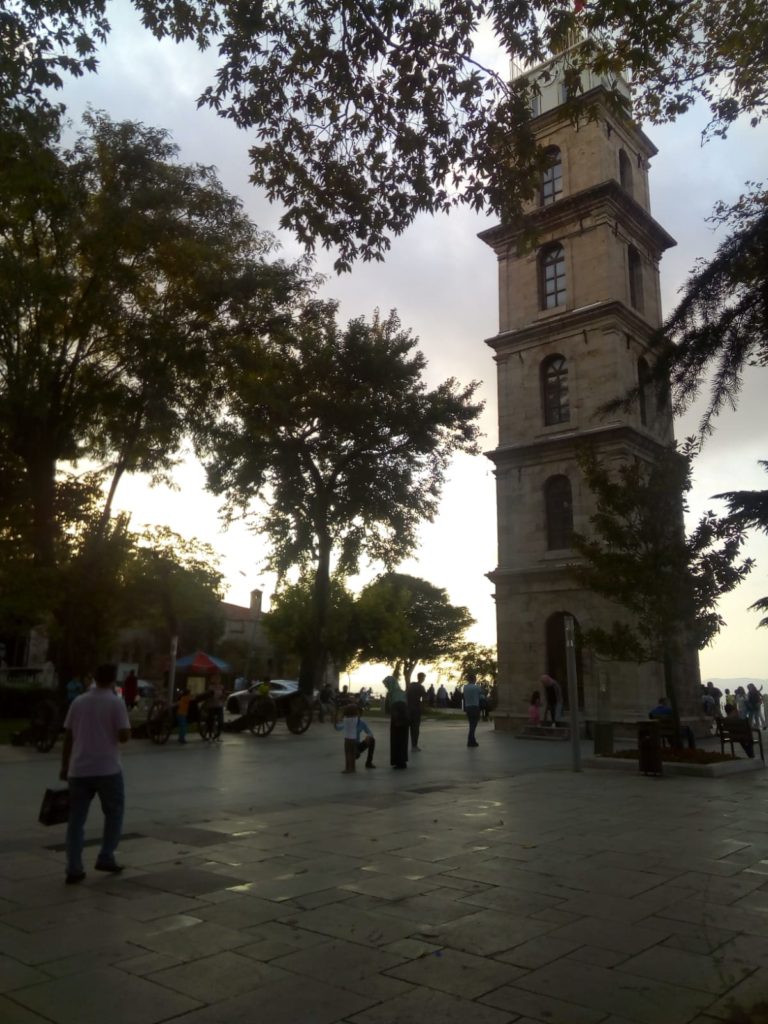
Clock Tower at the Tomb of Osman and Orhan Bey
Orhan Bey: Orhan Bey, the conqueror of Bursa, began the construction of Bursa Bey Palace. There’s nothing left of this palace in Bursa Castle. Locals say there are some remnants. Although this palace was started during Orhan Bey’s time, it was expanded and completed during the reign of Murat I.
Murat I: He, as the conqueror of Edirne, started the construction of Edirne Palace as the first palace. He also had Hisar Mosque built next to Bursa Castle. The first known imperial mosque is Murat Hüdavendigar Mosque in Bursa. It’s a bit further from the central mosques in Bursa, but I walked there. By the way, let me mention that imperial mosques are mosques built by the sultans from their own budgets, named after them. Almost all of them are complexes including madrasahs, mausoleums, and soup kitchens. Therefore, I won’t mention their madrasahs and soup kitchens separately when I talk about the mosques later in the text. Initially, they were built to commemorate successful campaigns, but later they were built without such a requirement. In addition to mosques, mosques were also built in İznik and Bilecik during Murat I’s reign.
Yıldırım Bayezid
Yıldırım Bayezid: Kütahya Ulu Mosque was built during the reign of Bayezid I. Yıldırım Bayezid spent his princehood as a sanjakbeyi in Kütahya. There’s a connection here. He had the Grand Mosque built in Bursa. He also started the construction of Yıldırım Bayezid Mosque in Bursa. As far as I know, the construction of the mosque was completed by Çelebi Mehmet. His tomb is also located here. Yıldırım Bayezid Mosque is also a bit far from the central mosques of Bursa, in the Yıldırım neighborhood.

Grand Mosque
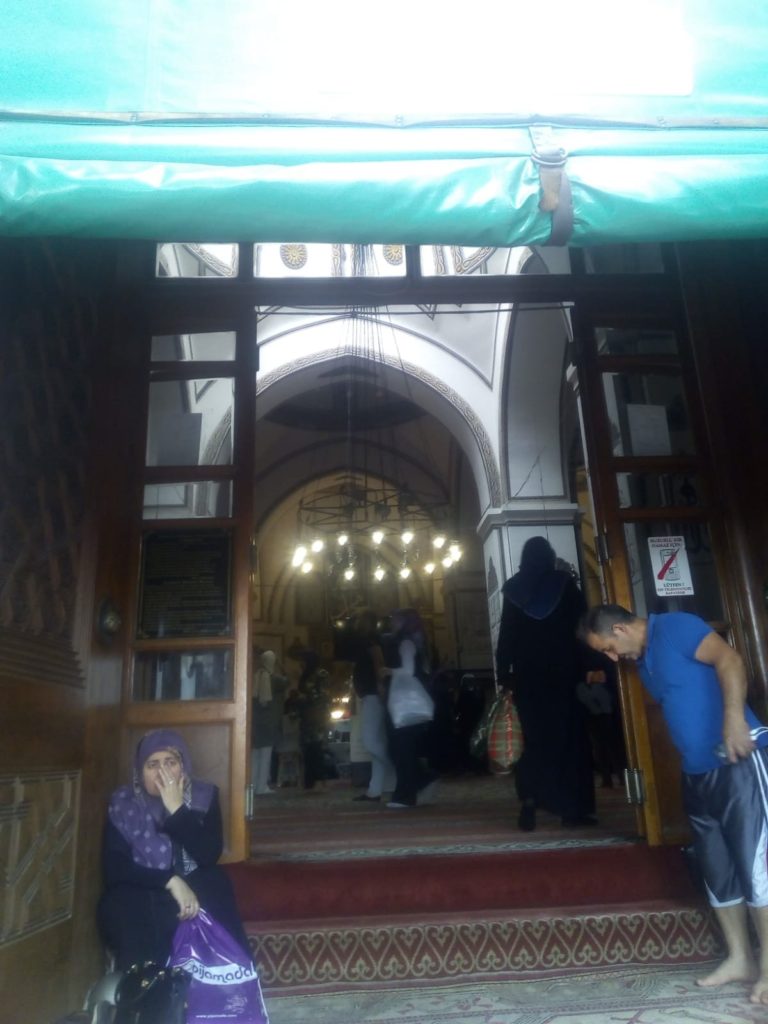
Inside the Grand Mosque
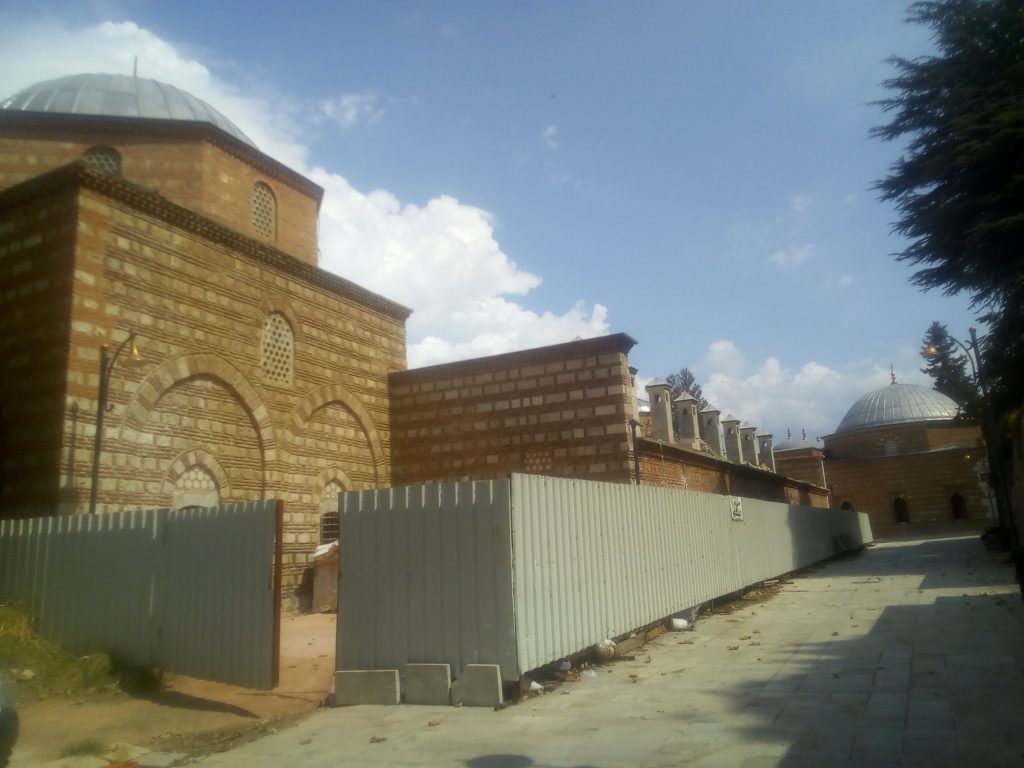
Yıldırım Mosque and its complex were under restoration
Yıldırım Bayezid wanted to conquer Istanbul. For this reason, he had Anadolu Hisarı built.
Çelebi Mehmet
Çelebi Mehmet: According to some sources during the Interregnum period, Süleyman Çelebi or according to some sources, Musa Çelebi started the construction of the Old Mosque in Edirne, which was completed by Çelebi Mehmet. Additionally, the Green Mosque in Bursa was built by Çelebi Mehmet. His tomb is here.
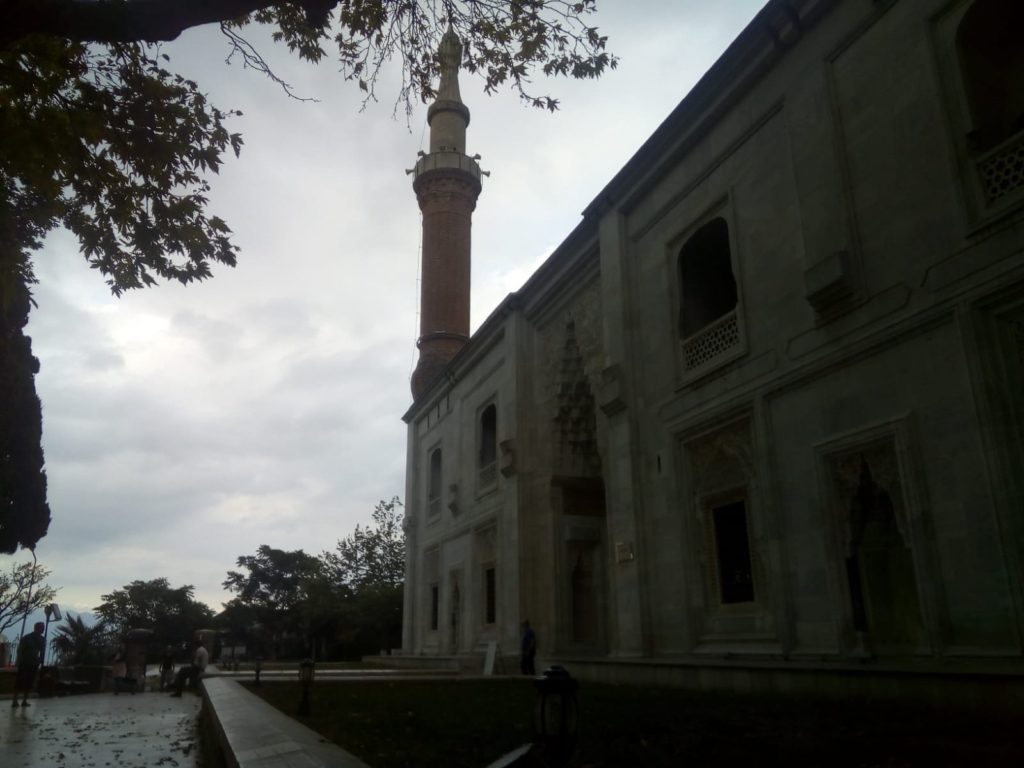
Green Mosque
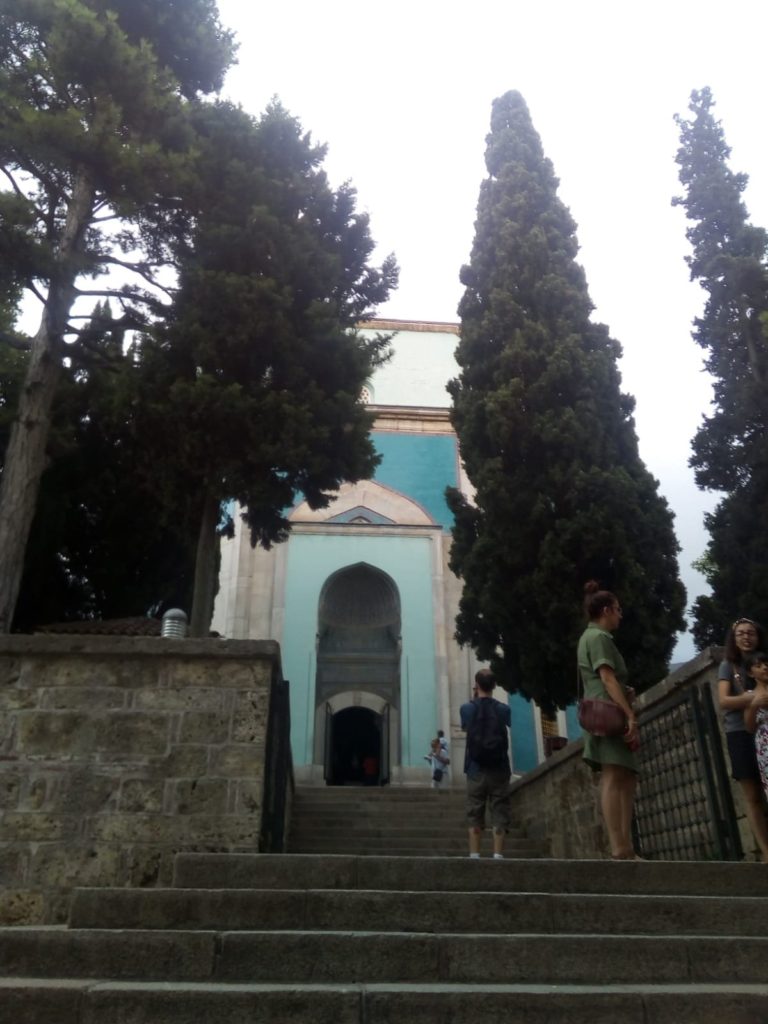
Green Tomb
Murat ll
Murat II: He renewed and expanded Edirne Palace. He had Üç Şerefeli Mosque in Edirne and Muradiye Mosque in Bursa built. His tomb is in Muradiye Mosque.

Murat II Mosque

Murat II Mosque
Mehmet the Conqueror
Mehmed the Conqueror: There’s a Fatih Tower in Manisa. It could be from his princehood as a sanjakbeyi in Manisa. It’s currently used as the Red Crescent Building. Fatih also made additions to Edirne Palace. I don’t know if Edirne Palace was rebuilt later, but during the reign of Kanuni Sultan Süleyman, it was one of the places where the sultan and his family frequently stayed. At one point, the sultan and his harem moved to Edirne Palace together with the heirs. The state was ruled from Edirne from Mehmed II’s era to the reign of Mustafa II. During the Balkan wars, it was blown up to prevent it from being used as an ammunition depot by enemy forces. There are still remnants in the region and it is possible to do some historical trips.

Remnants of Edirne Palace
Fatih Sultan Mehmet had Anadolu Hisarı built opposite Yıldırım Bayezid’s Anadolu Hisarı to conquer Istanbul.

Anadolu Fortress
Fatih Sultan Mehmet built a mosque in memory of Ayoub (companions of the Prophet) who were among the first Muslims to besiege Istanbul and died there. He also had the Fatih Mosque complex built. His tomb is here. The mosque was mostly destroyed in the 1509 earthquake. The rebuilt mosque was damaged by subsequent earthquakes and repaired. The Grand Bazaar was built during this period.

Fatih Mosque

Fatih Mosque
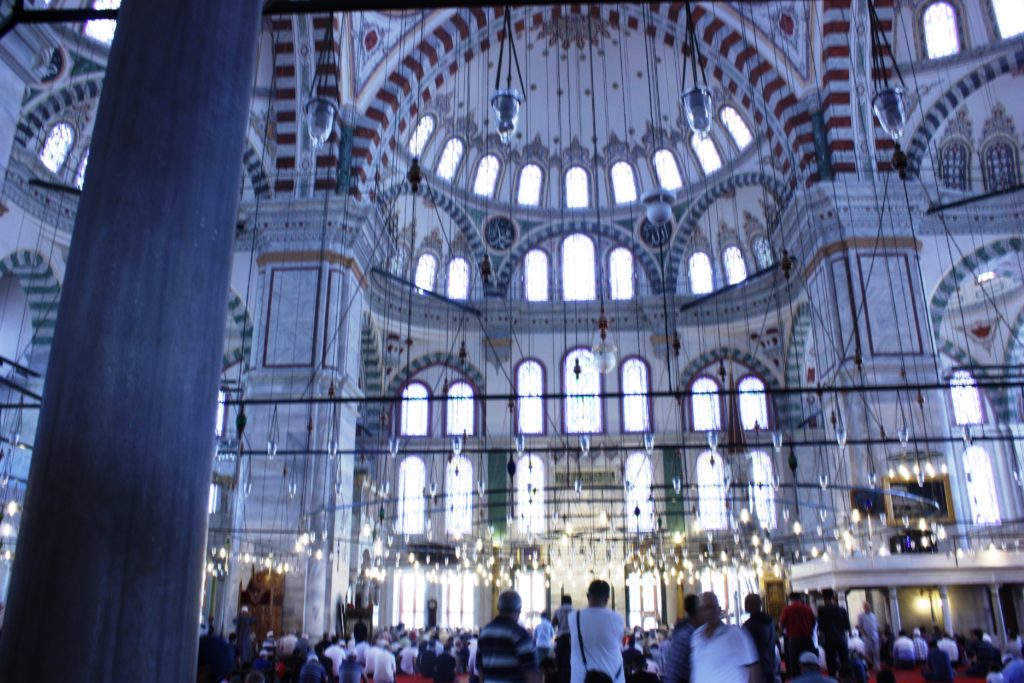
Fatih Mosque interior
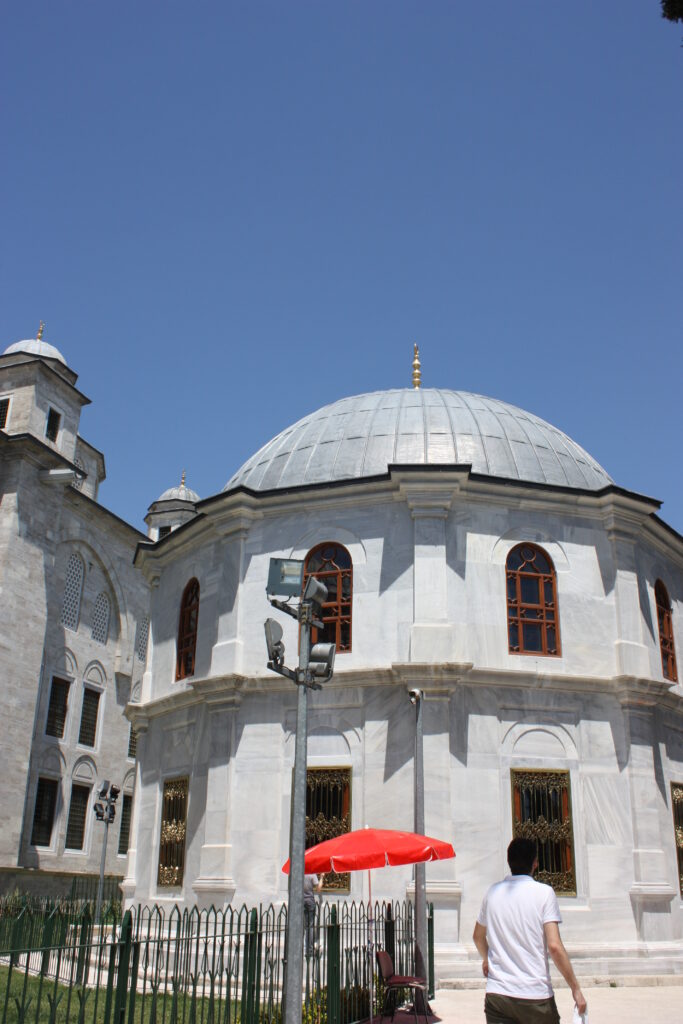
Fatih Tomb

Fatih Complex
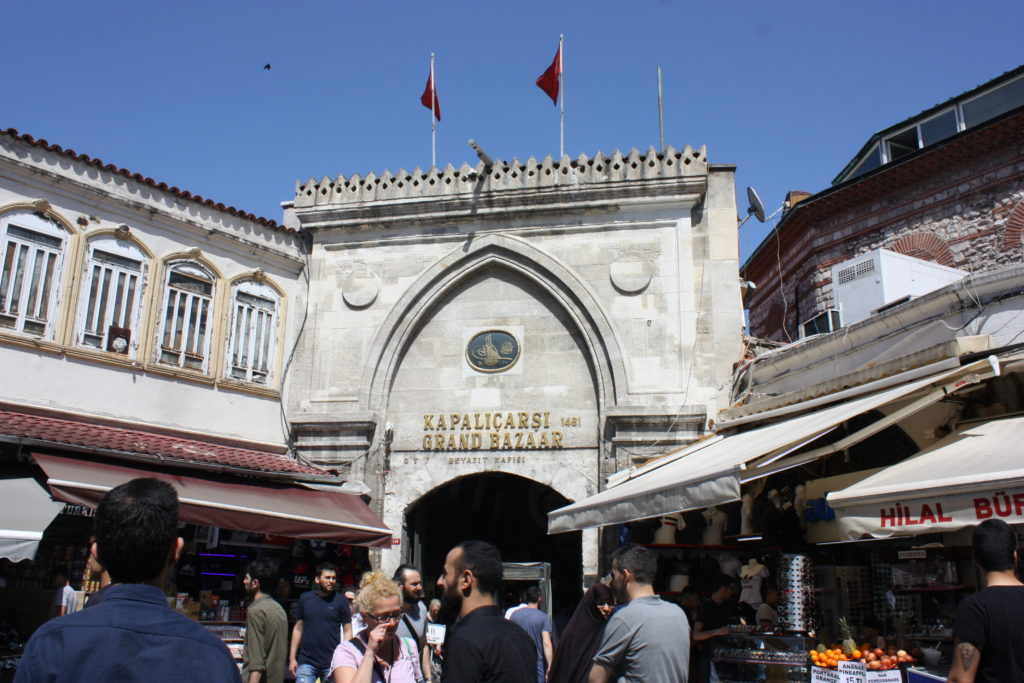
Grand Bazaar

Grand Bazaar
Fatih also initiated the construction of Topkapı Palace, the palace that was used the longest in Istanbul.

The back of the Topkapı Palace gate is behind the 3rd Ahmet Fountain. There are no photos inside as it’s forbidden to take photos. The Harem is paid but it’s worth visiting. Let me mention that the Harem extension was built after Kanuni Sultan Süleyman.
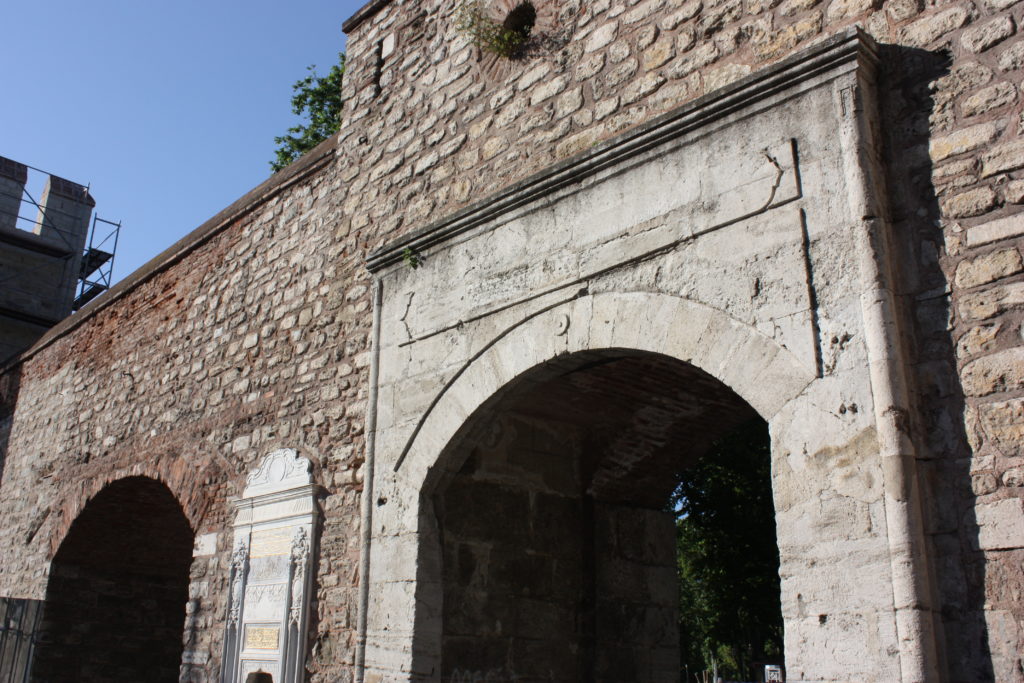
Gate of Gülhane Park

Gülhane Park was once the private gardens of Topkapı.
Additionally, another palace was built during the time of Fatih Sultan Mehmet for his family to reside in. The harem was institutionalized here. Since the harem was moved to Topkapı later, this place was named the Old Palace and turned into exile. Today, the only thing left from this palace, its gate, is used by Istanbul University.
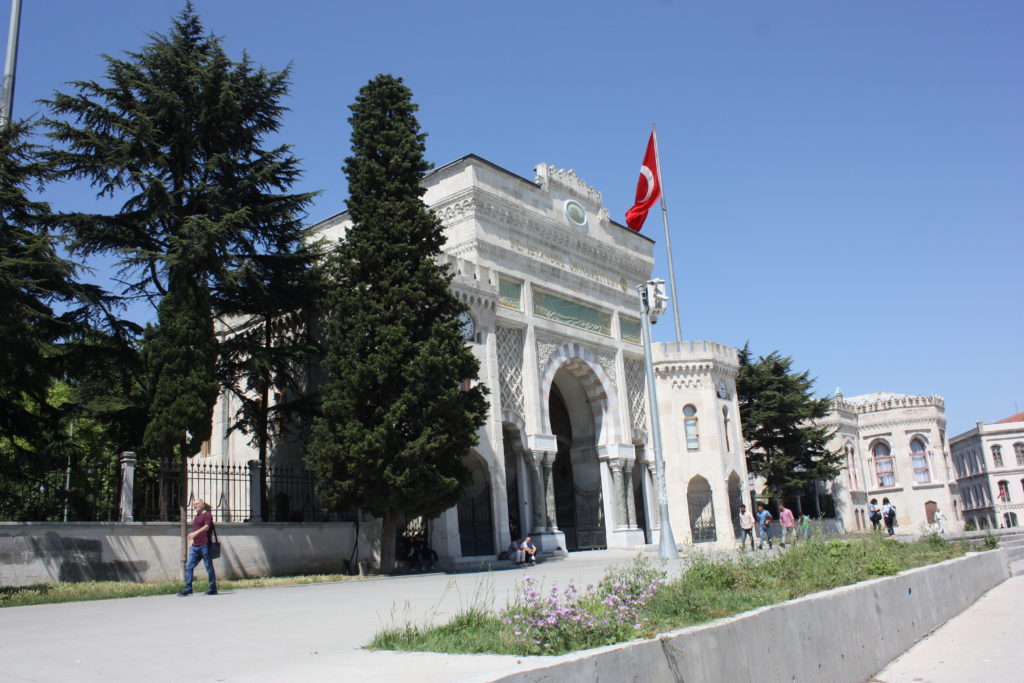
Gate of Istanbul University
Bayezid ll
Bayezid II: He built the Bayezid Mosque bearing his name. His tomb is also here. The mosque was damaged in the 1509 earthquake and repaired. Unfortunately, after the 1509 earthquake, the unlucky sultan had to rebuild all of Istanbul. He also had a mosque built in Edirne, which bears his name.
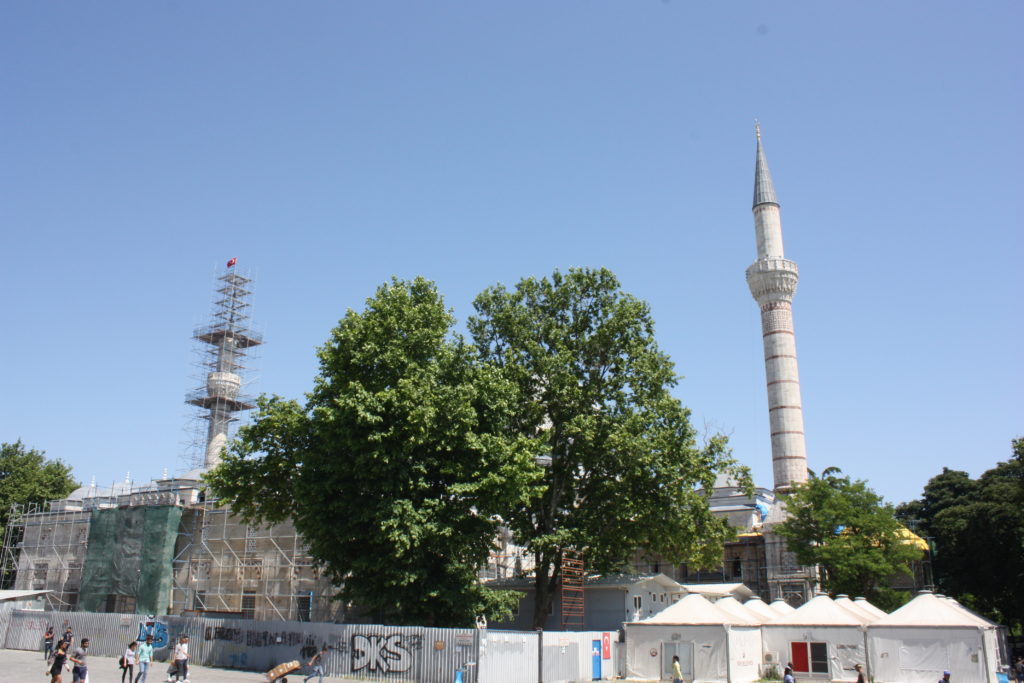
Bayezid Mosque under restoration
He also built two Hatuniye mosques in Anatolia for his mother and wife, and the Koza and Pirinç Han’s in Bursa were built by Bayezid II.

Han’s in Bursa
The Atik Ali Pasha Mosque in Çemberlitaş is also from this period for historical trips.

Atik Ali Pasha Mosque
Davut Paşa Palace was built by Bayezid II. It’s outside the walls. Over time, only one structure remained. This structure, now called Davut Pasha Pavilion, is located in Marmara University’s campus. The daughter of the Daggered Sultan, Fatma Sultan, is said to have lived in the Hancerli Sultan Yalı. It’s thought to have been built during Bayezid II’s reign. It’s currently used as the Museum of Islamic Art and open for historical trips. There are Hippodrome remnants beneath the building.

Ibrahim Pasha Palace

Ibrahim Pasha Palace
Kanuni Sultan Suleyman
Yavuz Sultan Selim: He had a significant reign although it was short. Yavuz didn’t contribute much to architecture. Yavuz Sultan Selim Mosque’s construction was started by him and completed by his son, Kanuni Sultan Süleyman. His tomb is here. Yavuz had the Sacred Relics extension built at Topkapı Palace and can be seen in historical trips.
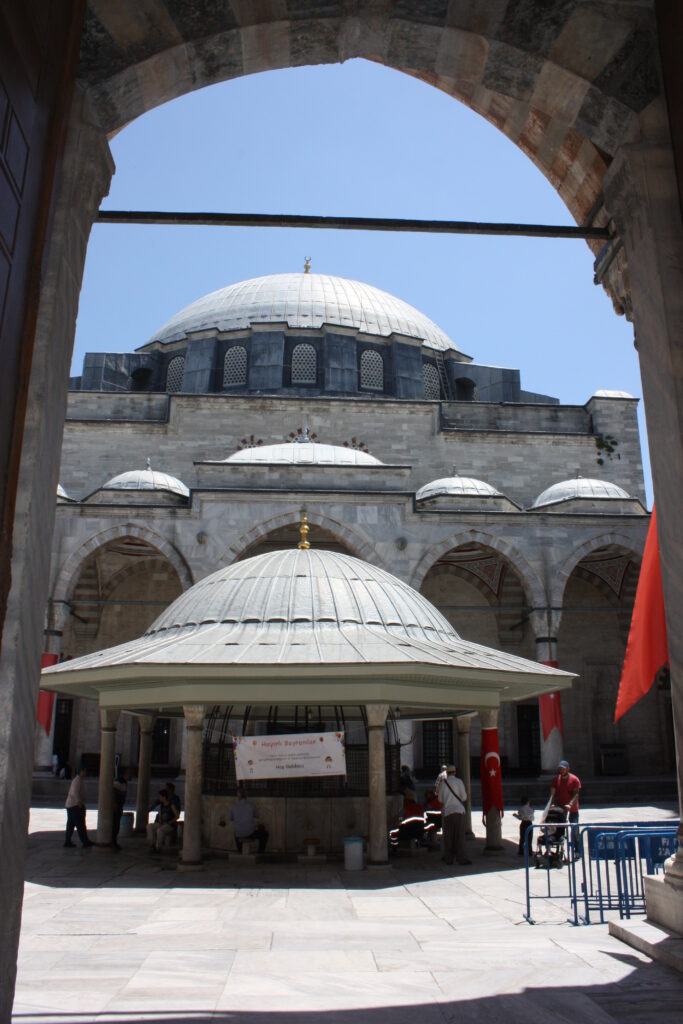
Yavuz Sultan Selim Mosque
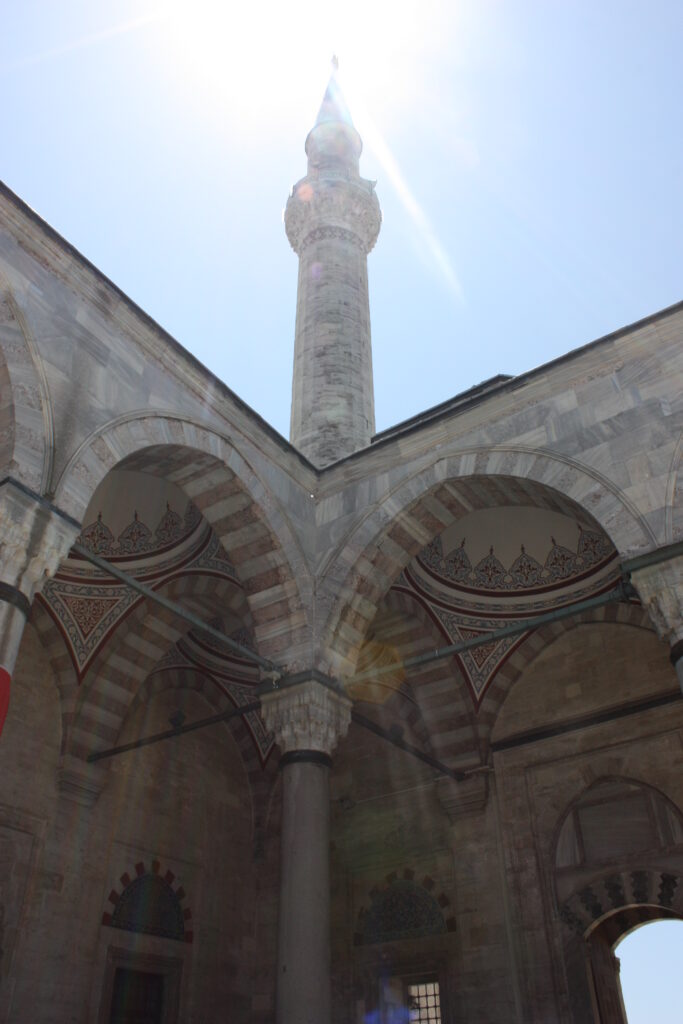
Yavuz Sultan Selim Mosque
Suleymaniye Mosque: It’s also one of the earliest mosques built during Kanuni’s time. Sultan Camii or Hafsa Sultan Mosque, built by Kanuni’s mother in Manisa, is one of the first mosques built during Kanuni’s time. Kanuni, who served as a sanjakbeyi in Manisa, had this mosque built. Hurrem Sultan, who commissioned Mimar Sinan’s early works, had Hurrem Sultan Bath, Haseki Mosque, and Haseki Complex built between Ayasofya and Sultan Ahmet Mosque.
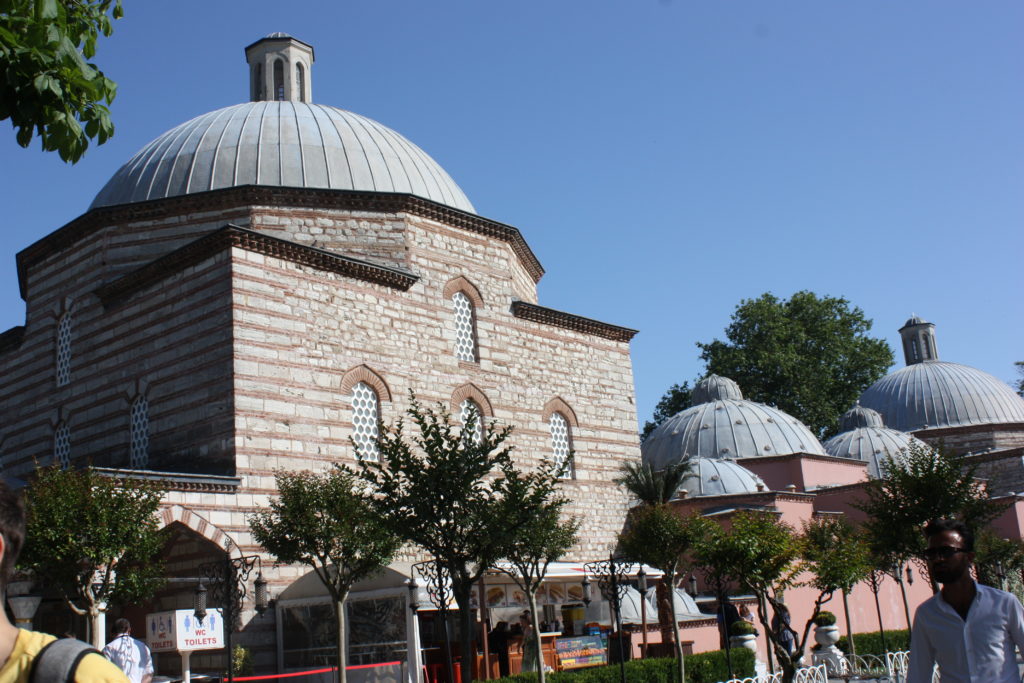
Hurrem Sultan Bath
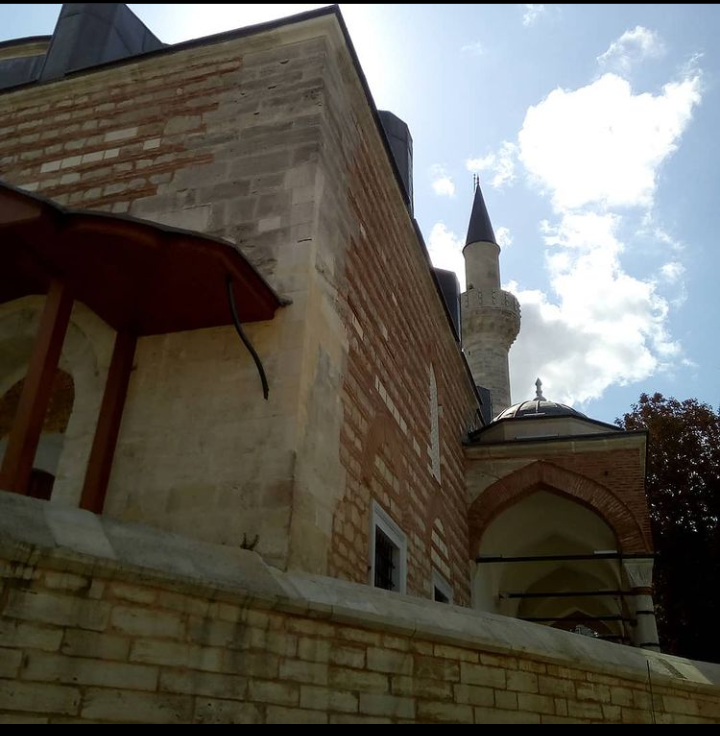
Haseki Mosque
Kanuni also had Şehzade Mosque built in memory of his son, who died during his princely reign as a sanjakbeyi. This is considered to be one of Mimar Sinan’s apprentice works and can be involved as historical trips to architecture.
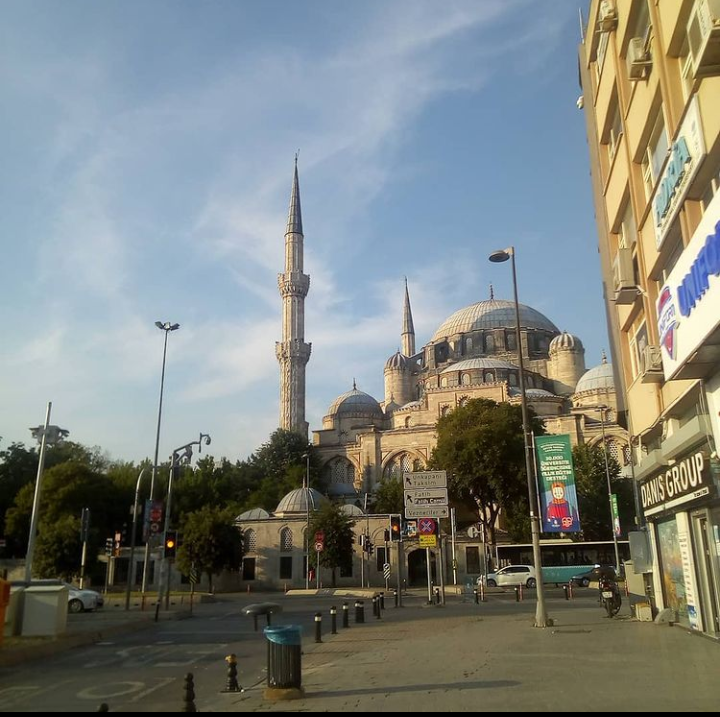
Şehzade Mosque
Then, a mosque was built for Mihrimah Sultan in Edirnekapı.
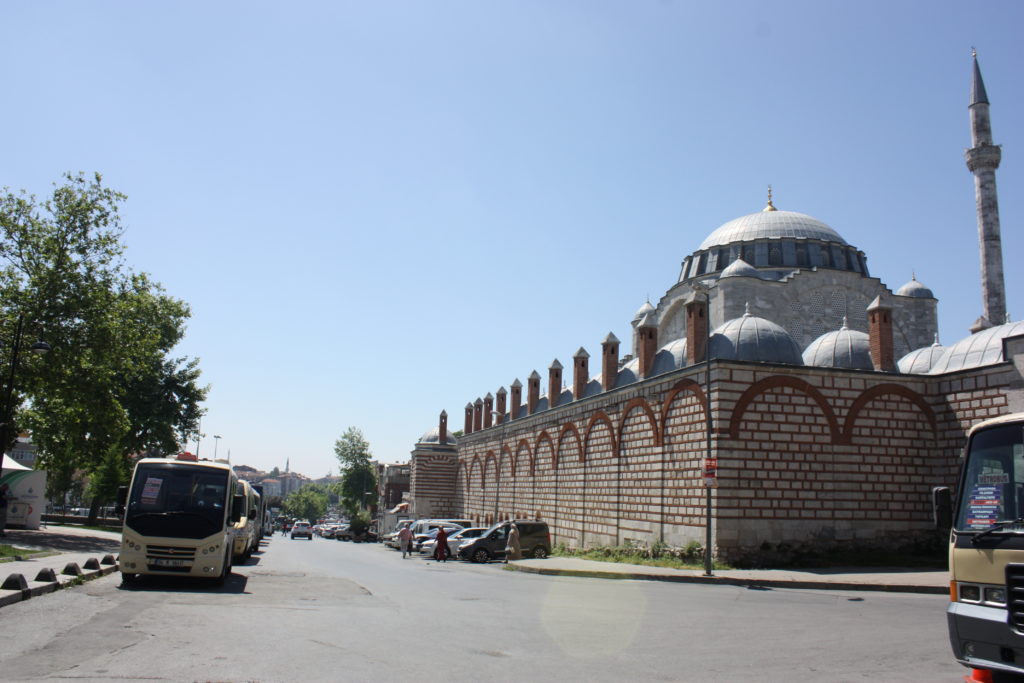
Mihrimah Sultan Mosque in Edirnekapı
The Süleymaniye Mosque, built in the name of Kanuni as Mimar Sinan’s masterpiece, is considered one of the most magnificent mosques in Istanbul and great place for historical trips. His tomb is here.
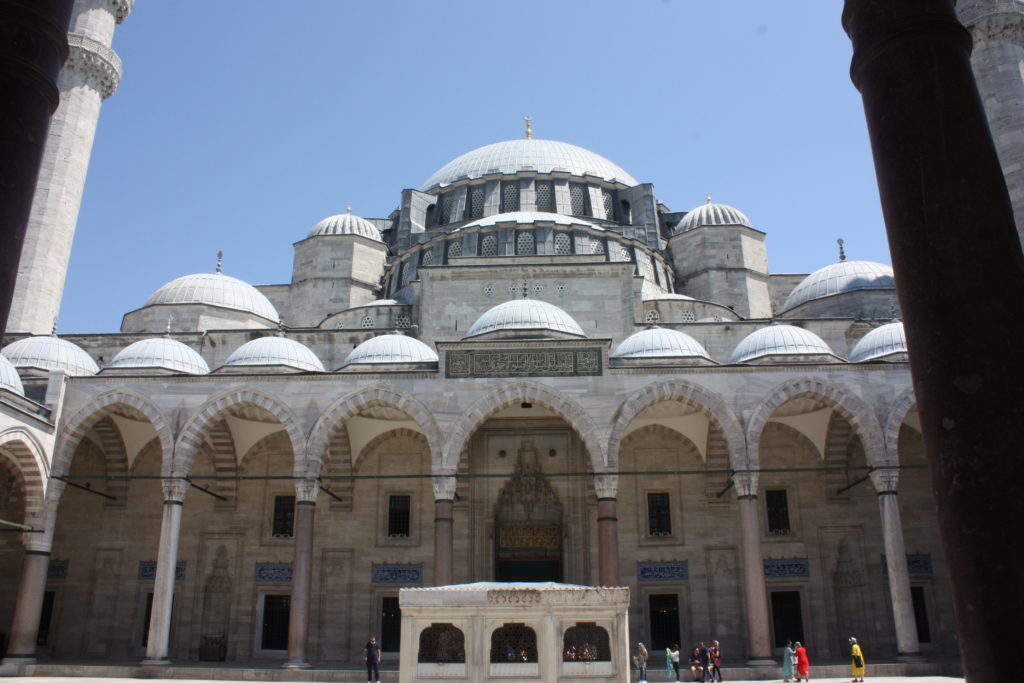
Süleymaniye Mosque

Süleymaniye
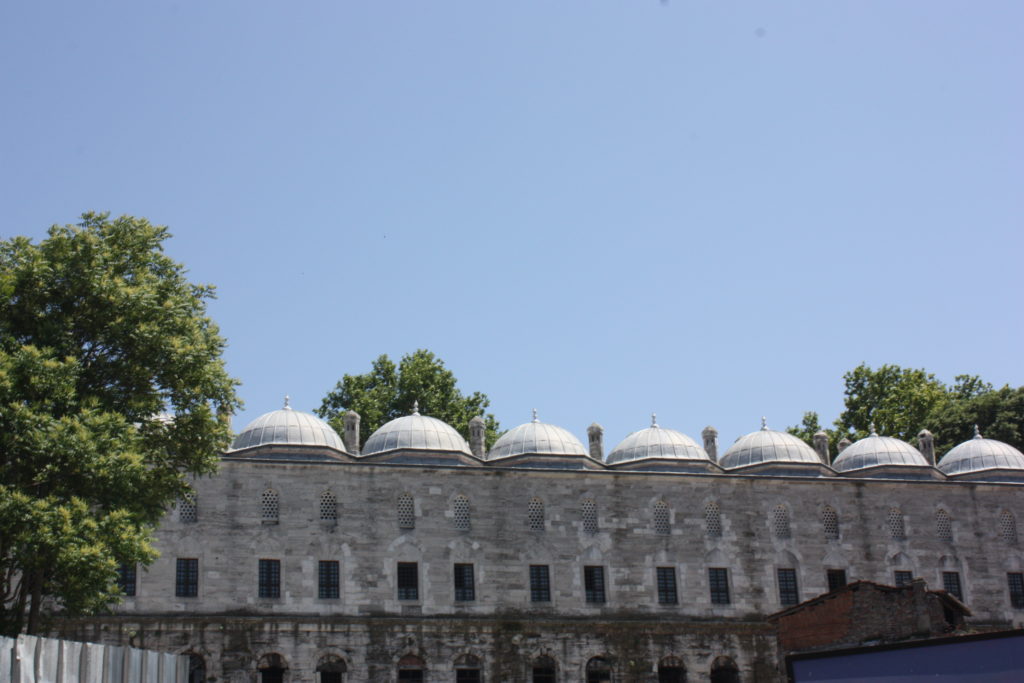
Süleymaniye
Kanuni also had a mosque built in memory of his son Cihangir, who died in the tragic incident of the execution of the famous prince Mustafa. Then, he had another mosque built for Mihrimah Sultan in Üsküdar. Since Üsküdar was the starting point for the Hajj pilgrimage, it was considered sacred at that time, and many queen mothers commissioned works here.
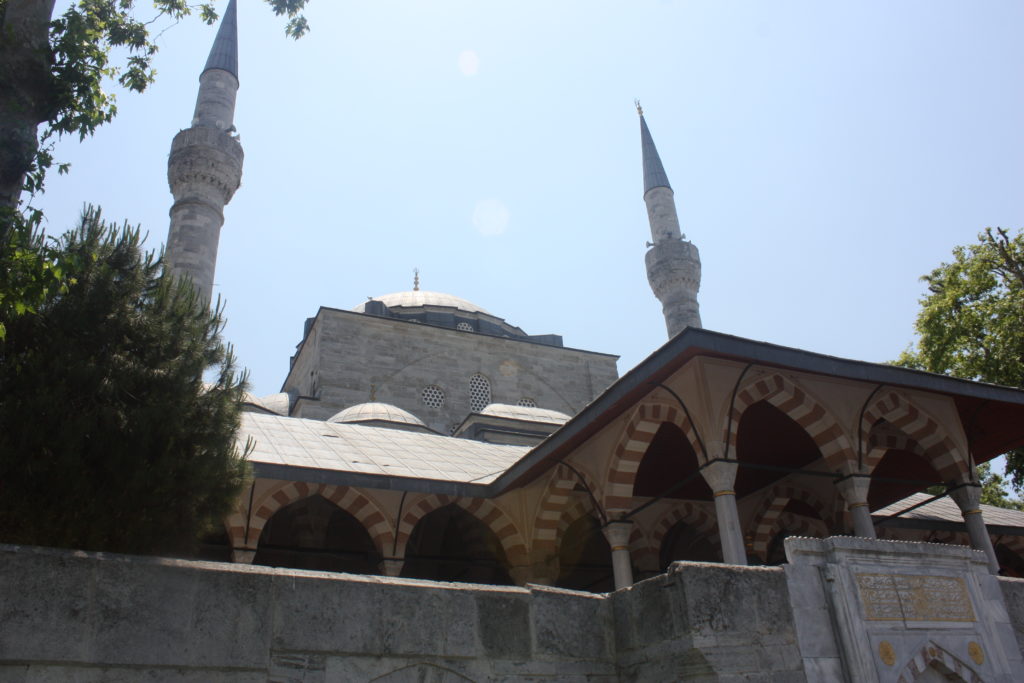
Mihrimah Sultan Mosque in Üsküdar
Then, Rüstem Pasha had many mosques and structures built by Mimar Sinan, and Sokullu Mehmet Pasha also had a series of mosques and structures built. The Rüstem Pasha Mosque I saw was in Edirne. Sokullu Mosque was after crossing the Galata Bridge. Also, many bridges were built. For example, the large bridge in Büyükçekmece was built during this period. The region is called Mimar Sinan. There’s even a small bridge built by Mimar Sinan in the neighborhood where I live where we use to do some historical trips.
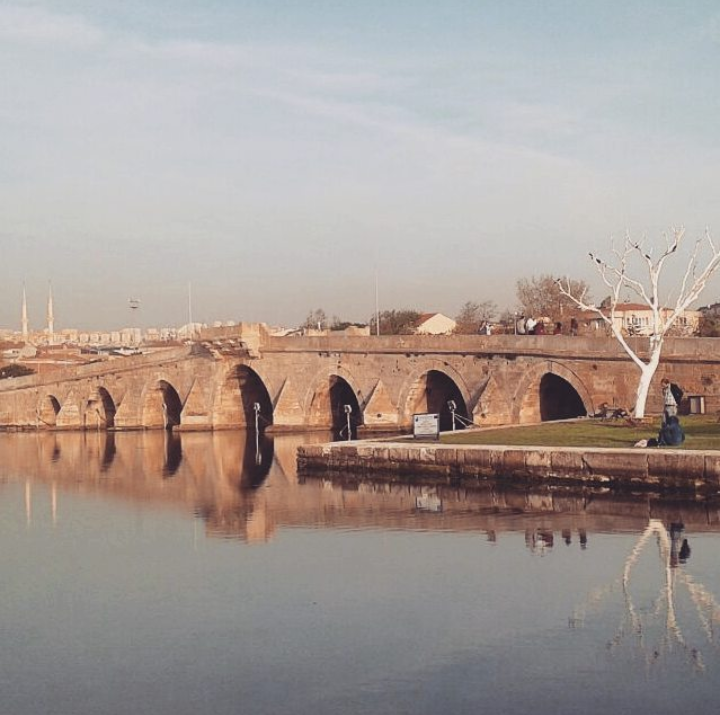
Mimar Sinan Bridge
Many palaces were also built during this period. Also, the Orta Mosque, which is located in the middle of the Janissary Barracks, where the janissaries performed their prayers, was also built by Ibrahim Pasha. A palace was built in Üsküdar. Mihrimah Sultan and her daughter Ayşe Sultan stayed here afterward. Instead of the İstavroz Palace built during this period, Beylerbeyi Palace was later built. His sister, Şah Sultan, lived in the previously built Hançerli Sultan Yalı.
Selim ll
Second Selim: The Selimiye Mosque in Edirne, referred to as the masterpiece of Mimar Sinan, was built during this period.

The Selimiye Mosque
Selim also had a Selimiye Mosque built in Konya, where his brother Bayezid served as a sanjak bey, as an attempt to appease the public during the throne struggles that led to the death of his brother. Selim’s tomb is located in Ayasofya.
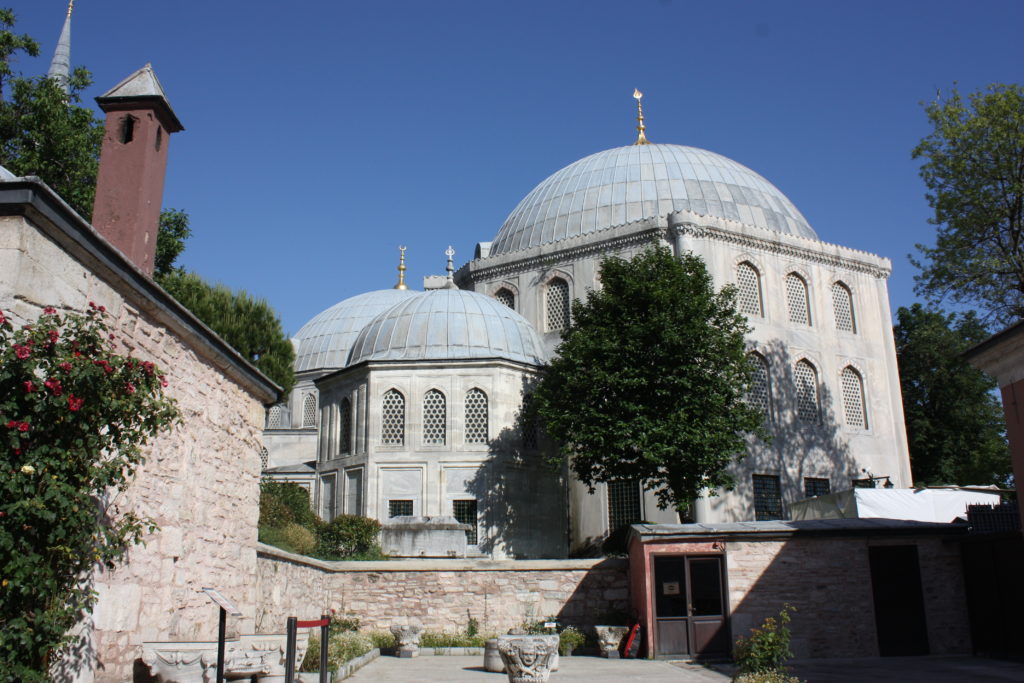
Ayasofya Tombs
Murat lll
Third Murat: All the works of this period were also commissioned by Mimar Sinan. He had the Muradiye Mosque built in Manisa, where he served as a sanjak bey. Additionally, many additions were made to the structure called the Fatih Tower, turning it into a palace. Today, there are no remains of this palace. There is now a park where the old palace used to be. In Üsküdar, there is an interesting structure called the Şemsi Pasha Mosque, which is almost in the sea, and it was also built by Mimar Sinan. After being assassinated by Sokullu, who was married to Ayşe Sultan, the daughter of Mihrimah Sultan, Şemsi Pasha served as grand vizier. It is also mentioned that he was the grandson of Bayezid II’s daughters. However, since they were from different periods, there seems to be a significant age difference.
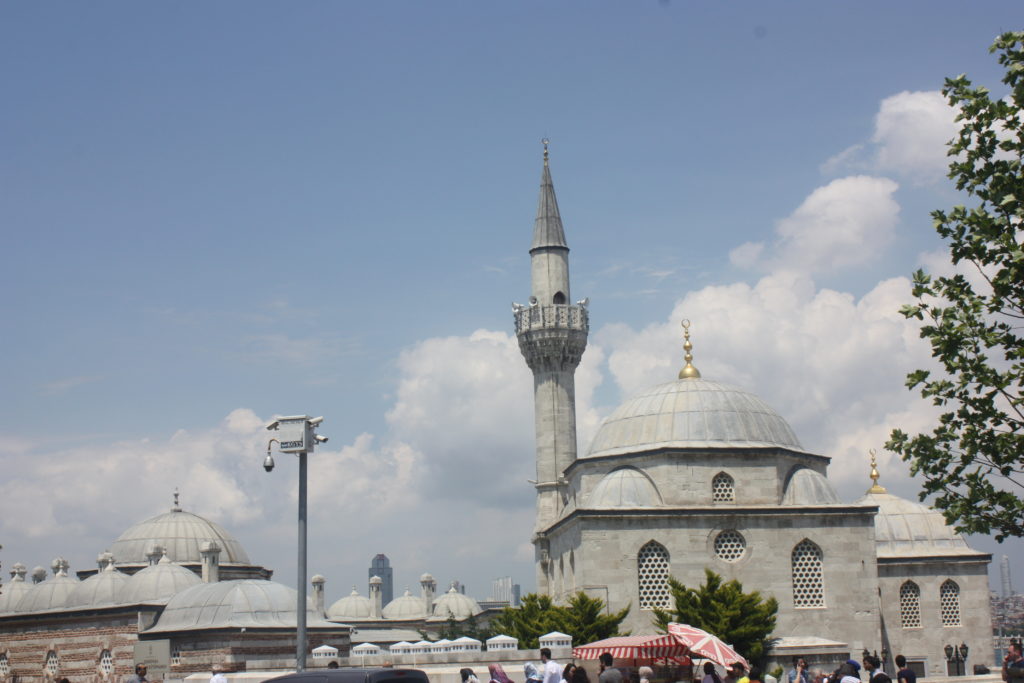
Şemsi Pasha Mosque
The Kılıç Ali Pasha Mosque, the captain of the navy of the period, was once located inside the sea in front of Tophane.
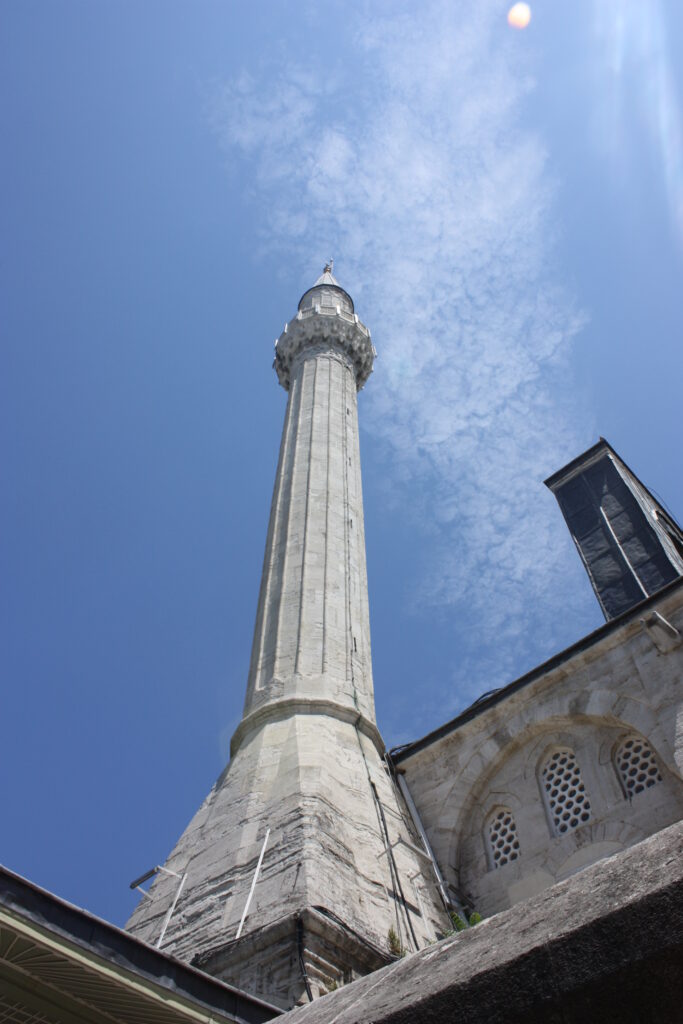
Kılıç Ali Pasha Mosque
The last work of Mimar Sinan is the Valide Sultan Mosque, commissioned by Nurbanu Sultan, the mother of Murat III, in Üsküdar. Since other valide sultans also built mosques here, it is referred to as the old Valide Sultan Mosque.
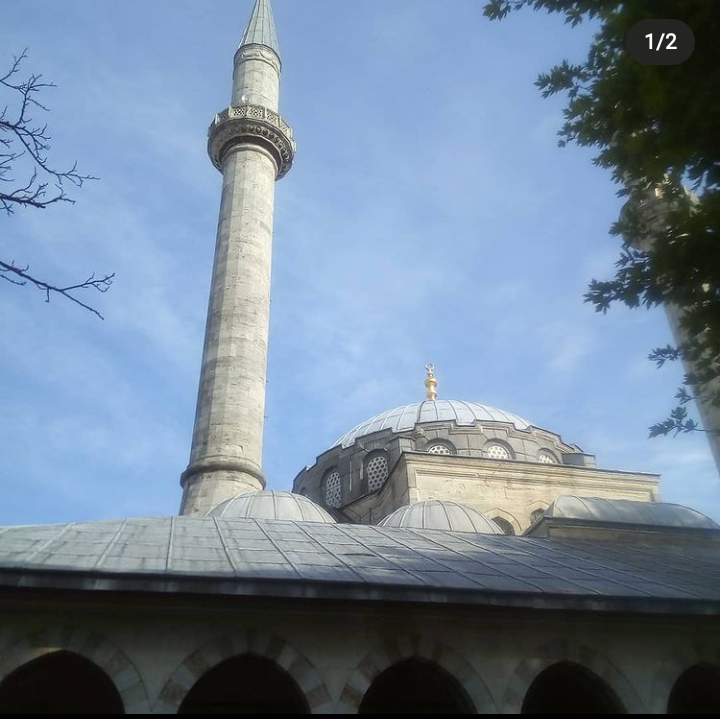
Old Valide Mosque
Additionally, during this period, the harem was permanently moved to Topkapı Palace, so extensions were made here. His tomb is in Ayasofya.
Third Mehmet: The construction of the Yeni Mosque began during this period, but due to bribery allegations, the construction remained unfinished. For a period, the Davutpaşa Palace was used as a refuge during the plague epidemic. Third Mehmet ruled for 5 years and died at a relatively young age. His tomb is in Ayasofya.
Sultan Ahmet
First Ahmet: During this period, the Old Palace officially became a place of exile. Since Safiye Sultan, the grandmother of Ahmet I, was still alive and there was a new valide sultan, Safiye Sultan was exiled. He commissioned the famous Sultan Ahmet Mosque. It is said that Sultan Ahmet personally worked on the construction of the mosque. His tomb is in front of the mosque.

Sultan Ahmet Mosque partially under restoration
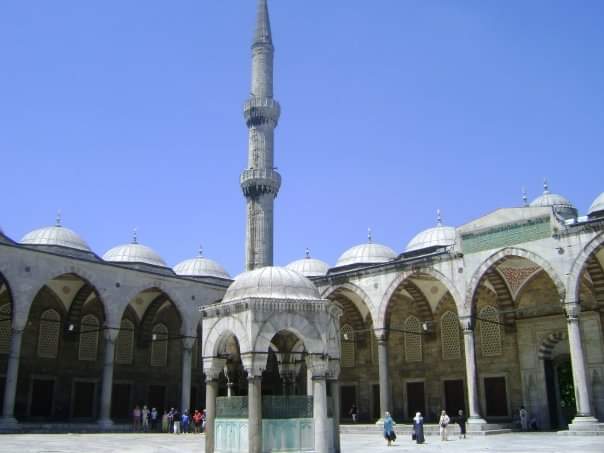
Sultan Ahmet Mosque
First Mustafa: There is no known work from the short reign of the craziest sultan to ascend the throne, 1st Mustafa. His tomb is in the baptistery of Ayasofya.

Tombs in the baptistery of Ayasofya
Young Osman: 2nd Osman, who took the title of the youngest sultan to die at a young age, unfortunately died in a horrifying manner. Although he does not have a well-known work, it is said that the Orta Mosque witnessed his removal from the throne and lynching incidents. His tomb is in Sultan Ahmet.
Fourth Murat: During the reign of 4th Murat, who died at a young age and could not stay in power for long if his mother’s reign is excluded, Baghdad and Revan pavilions were built at Topkapı Palace in honor of the Baghdad conquest. During this period or the Ibrahim period, the old palace burned down and some concubines died. His tomb is in Sultan Ahmet.
Ibrahim: Another sultan who went mad during the cage life, Ibrahim, was not as crazy as Mustafa. In fact, besides his obsession with women, he seems fine to me. I can say he won my heart by taxing the rich and dressing cats in coats and organizing weddings for them. Anyway, only extensions were made to Topkapı Palace during this period. His tomb is in the baptistery of Ayasofya.
Mehmet lV
Fourth Mehmet: During this period, visits to the Üsküdar Palace were frequent, and hunting parties were held at the Davut Pasha Palace. After the Köprülü period, the palace residents were permanently moved to Edirne Palace. The construction of the Beşiktaş coastal palace began during this period. Later, Dolmabahçe Palace was built here. The construction of the new mosque, which was abandoned during the reign of 3rd Mehmet, was completed during this period by the mother of 4th Mehmet, Turhan Sultan. Additionally, the Hünkar Pavilion and Egyptian Bazaar were built here.
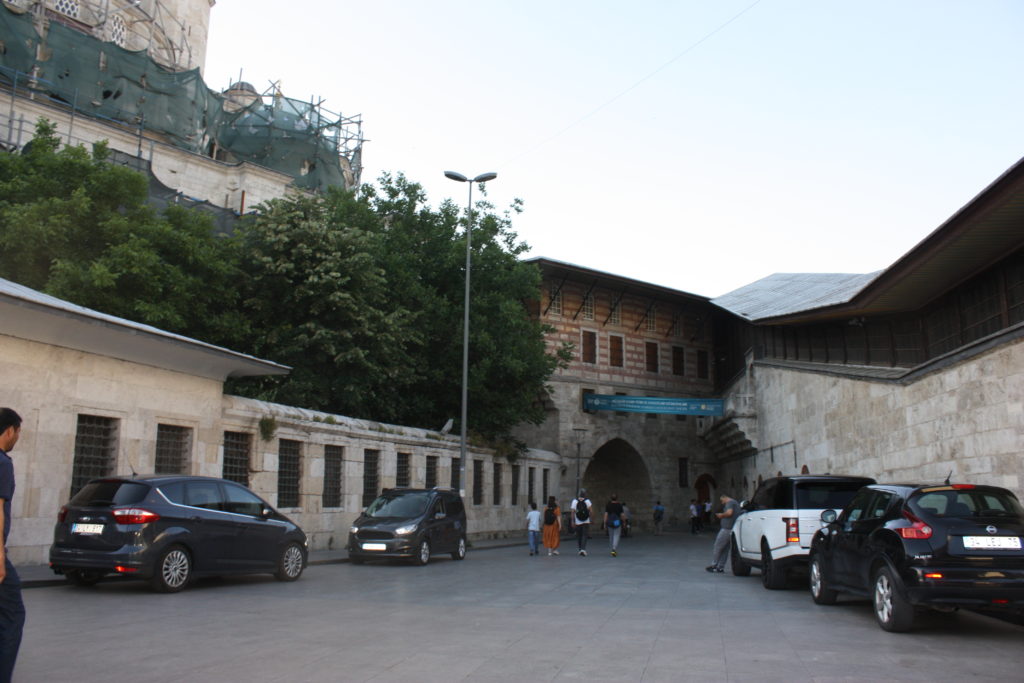
Hünkar Pavilion

Egyptian Bazaar
This place was initially called the new valide sultan mosque, but then it started to be called the new mosque because other valide sultan mosques were also built. It is also called Eminönü Mosque. His tomb is here.
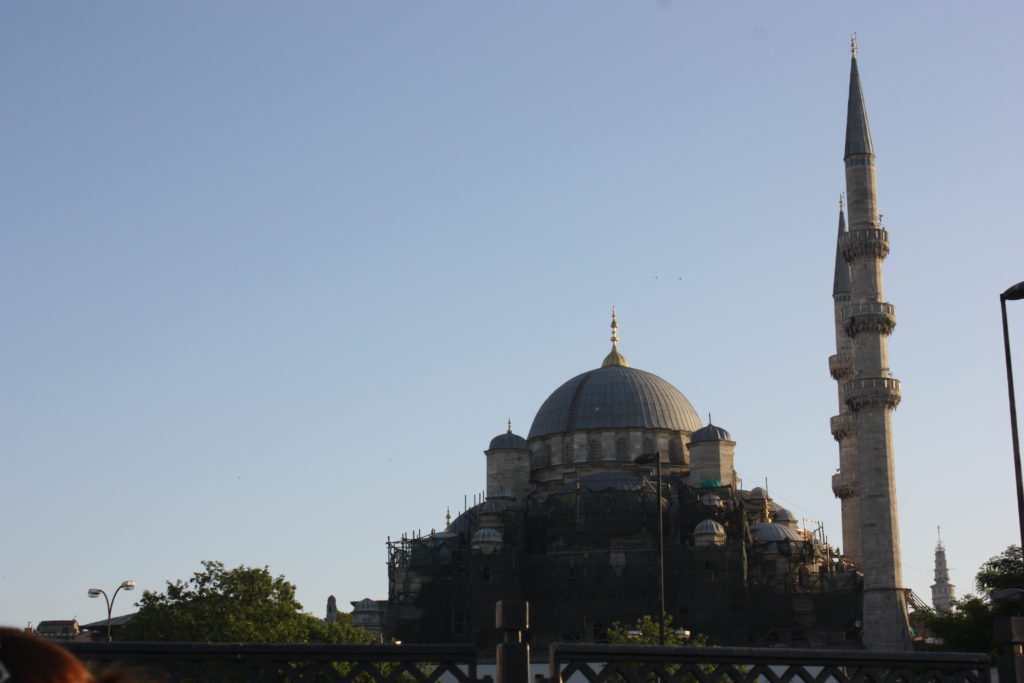
New Mosque
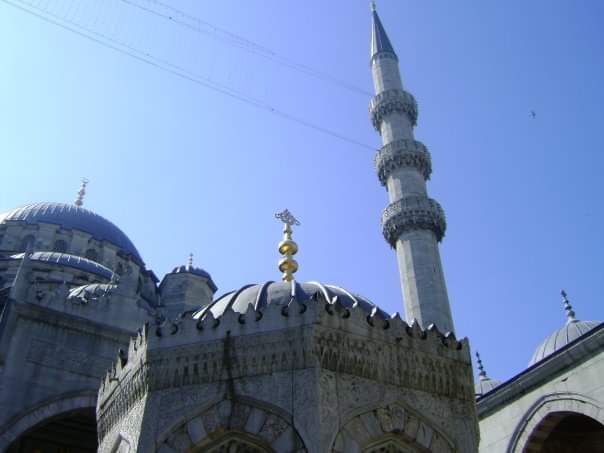
New Mosque
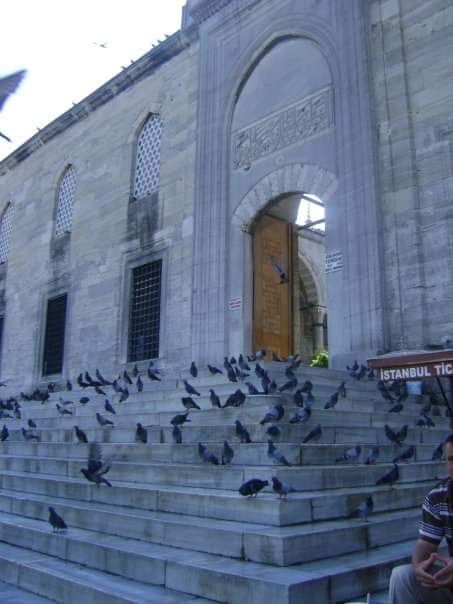
There are many birds in front of this mosque
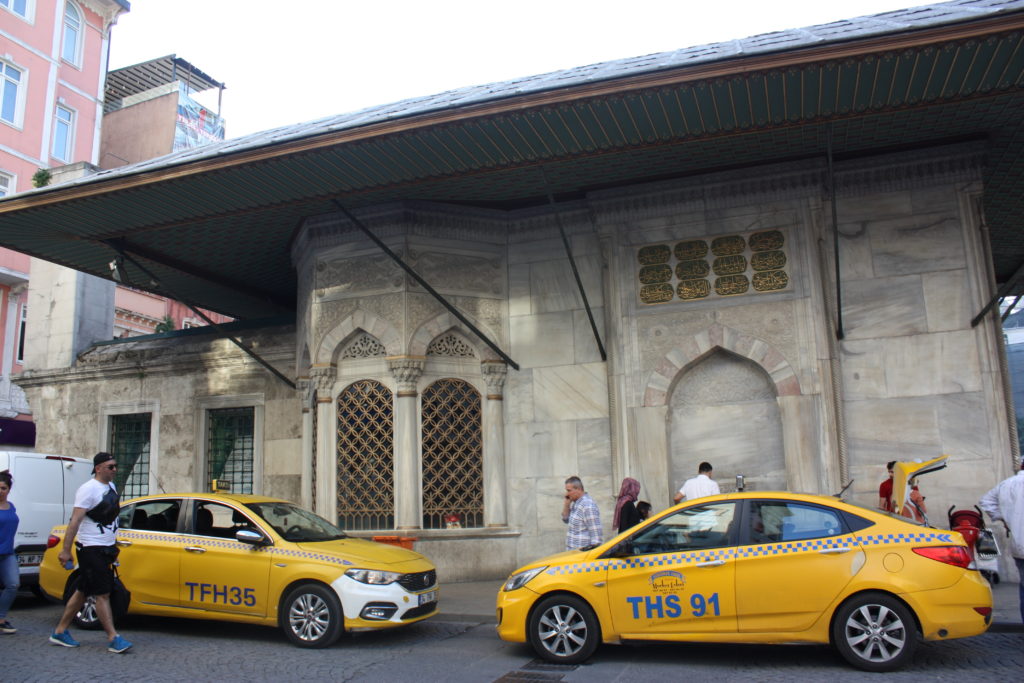
Hatice Turhan Sultan Fountain
Second Süleyman: 2nd Süleyman, who ascended the throne in a weakened state for 4 years after leaving the cage, also ruled the country from Edirne Palace. His tomb is in Süleymaniye.
Second Ahmet: Similarly, 2nd Ahmet, who ascended the throne in a weakened state for 4 years after leaving the cage, also ruled the country from Edirne Palace. His tomb is in Süleymaniye.
Second Mustafa: This sultan, who ruled the country from Edirne Palace until he was dethroned, has a tomb in the New Mosque.
Ahmet lll
Third Ahmet: Third Ahmet, who moved the palace residents back to Topkapı during his reign, carried out many construction works during the tulip period. His mother, Emetullah Gülnuş Sultan, had the New Valide Sultan Mosque built in Üsküdar.

New Valide Mosque
The Çırağan Coastal Palace began to be built during this period, and his daughter and son-in-law, Nevşehirli Ibrahim Pasha, were among the first to live here as grand viziers. The huge Ahmediye Fountain in front of Topkapı Palace was built during this period.

Third Ahmet Fountain
Additions were made to Topkapı Palace. Many fountains and pools were built in Istanbul. The first Sadabad Palace was built during this period. Neşetabad Palace was also built during this period, but it did not survive to the present day. The Tırnakçı Mansion in Ortaköy was built for his daughter Esma Sultan. Additionally, Esma Sultan lived in the Sofia Palace, which remained from Byzantium. A mosque was built in the name of his other daughter, Zeynep Sultan. The tomb of Third Ahmet is in the New Mosque.
First Mahmud: 1st Mahmud started the construction of the Nuruosmaniye Mosque in the Grand Bazaar. His tomb is in the New Mosque.
Third Osman: 3rd Osman, who ruled for 3 years, collapsed the mosque built by 1st Mahmud and named it after himself. According to a story, 1st Mahmud was mistakenly thought to be dead and buried, and when his coffin was nailed shut, sounds were heard from inside. His tomb is in the New Mosque.

Nuruosmaniye Mosque
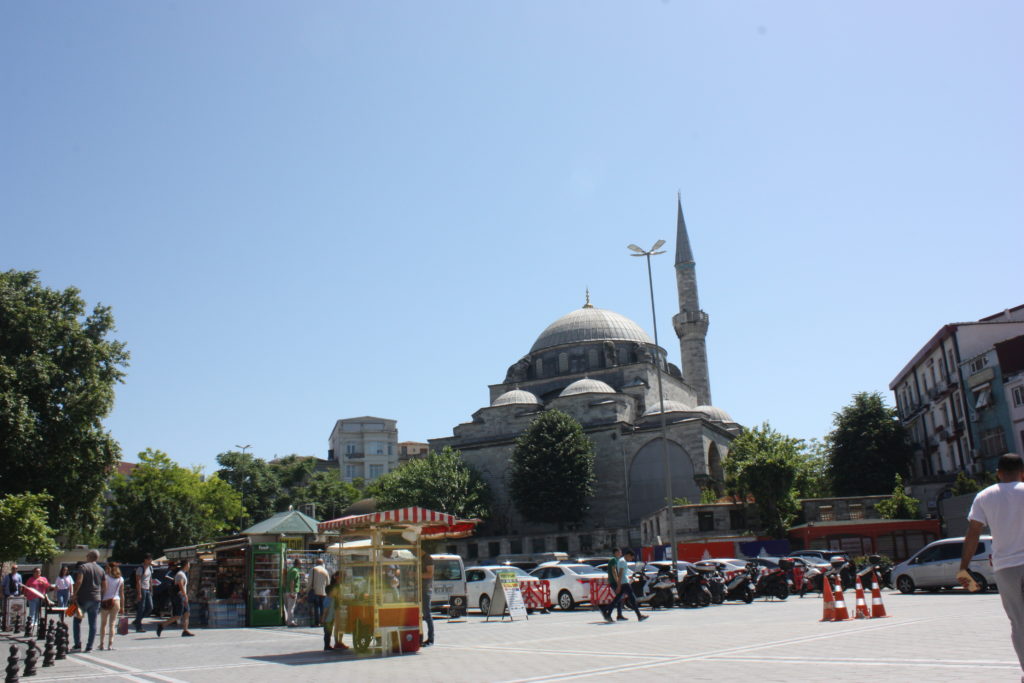
Nuruosmaniye Mosque
Mustafa lll
Third Mustafa: The Laleli Camii was built by his tutor Laleli Baba in his name.
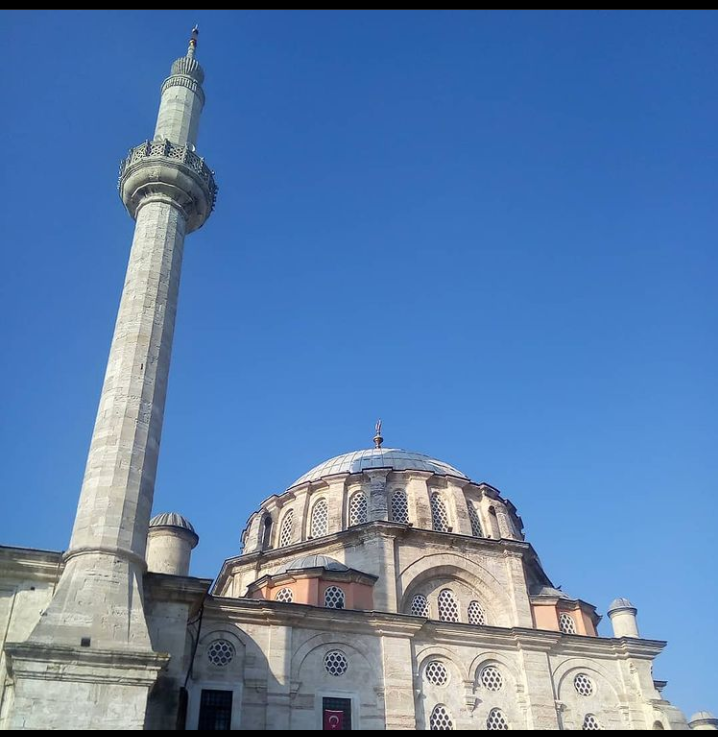
Laleli Mosque
Additionally, he had the Ayazma Mosque built. His tomb is in Laleli Mosque.
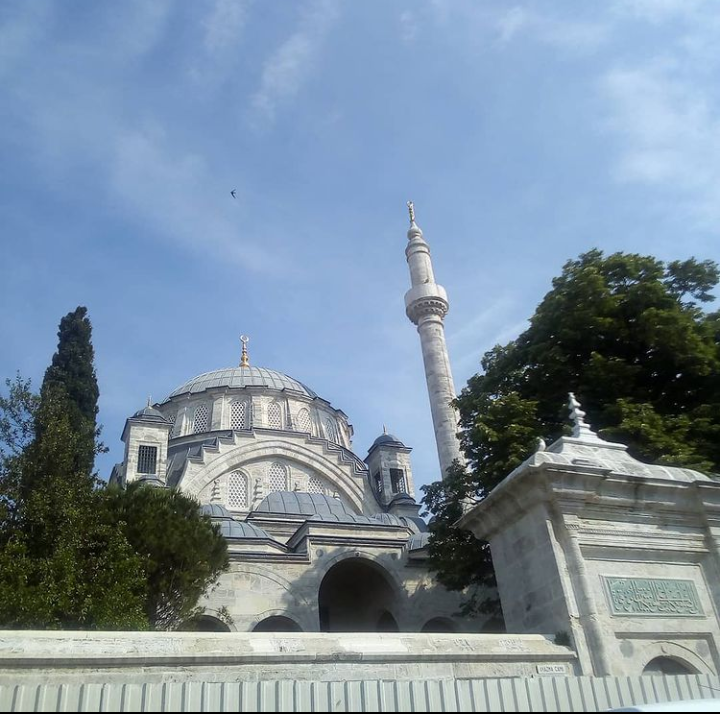
Ayazma Mosque
First Abdülhamit: The first central heating system was installed in Ağrı and the İshak Pasha Palace was built during the reign of 1st Abdülhamit. He had the Beylerbeyi Hamidiye Mosque built. He has a tomb in his name. New pavilions were built in the harem of Topkapı Palace due to fires.
Selim lll
Third Selim: He had the Grand Selimiye Mosque built in Üsküdar.
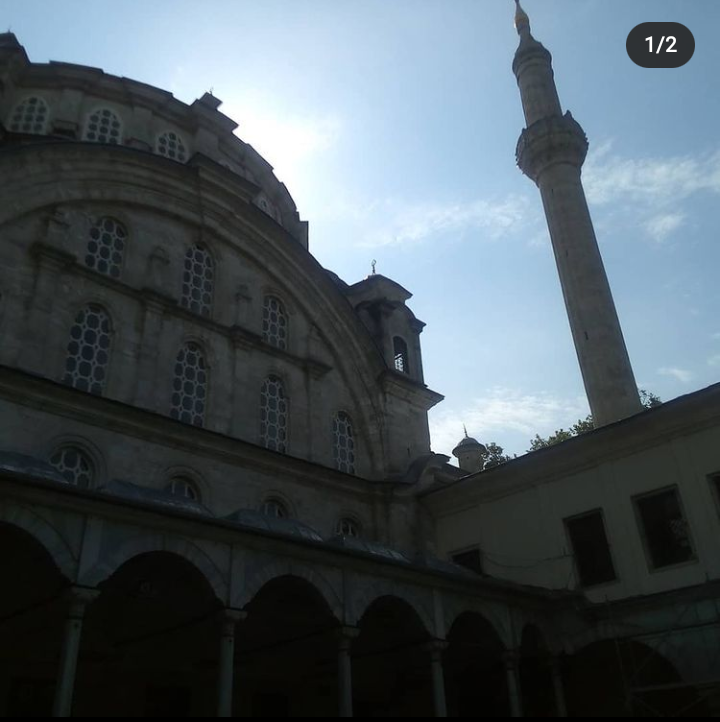
Grand Selimiye Mosque
Right next to it, the Selimiye Barracks were built on the site of the old Üsküdar Palace. It is still used as a military barracks. I couldn’t take a photo because it’s forbidden to take photos. The Yıldız Palace was built by 3rd Selim. The Hançerli Sultan Mansion was temporarily allocated to his sisters. During the renovations of the Sadabad Palace in the Selim period, the Tırnakçı Mansion passed from Büyük Esma Sultan to Küçük Esma Sultan, the daughter of 1st Abdülhamit.
The Hançerli Sultan Mansion later passed to Esma Sultan, but it did not survive to the present day. His tomb is in Laleli Mosque. The Ihlamur Pavilion was built during this period and reached its final form during the Abdülmecid period. The Yıldız Palace was built during this period and completely moved to this palace during the reign of 2nd Abdülhamit. Since I have always been under renovation as long as I know, I took a photo of the Yıldız Park, which is the garden of the palace.

Yıldız Park
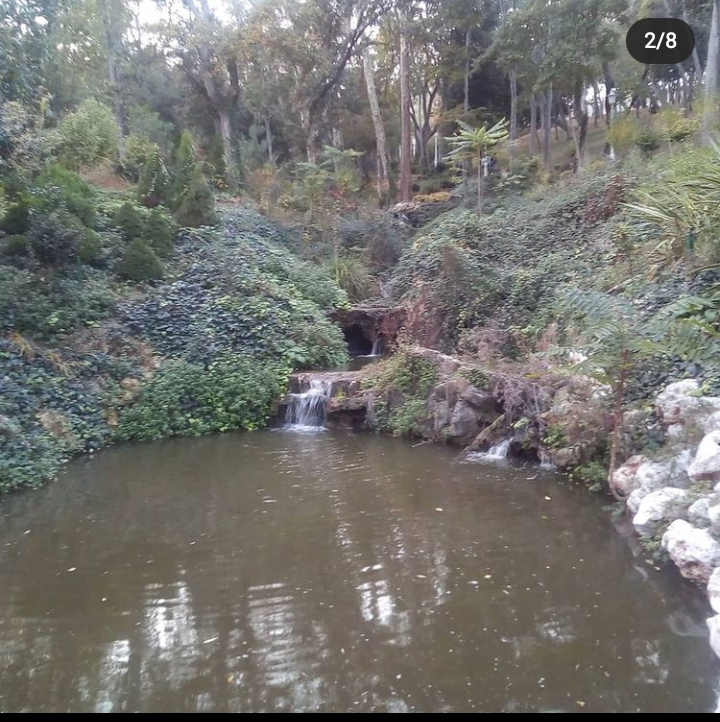
Yıldız Park
Fourth Mustafa: There is no popular structure built during the reign of 4th Mustafa, one of the sultans who ruled for the shortest time. His tomb is in the tomb of 1st Abdülhamit.
Mahmut ll
Second Mahmud: During his time, the old palace was completely abandoned, and the palace residents began to settle in the Beşiktaş and Çırağan coastal palaces, which were previously used as summer residences. The Nusretiye Mosque, seen after the Kılıç Ali Pasha Mosque on the Karaköy-Tophane line, was built during this period.
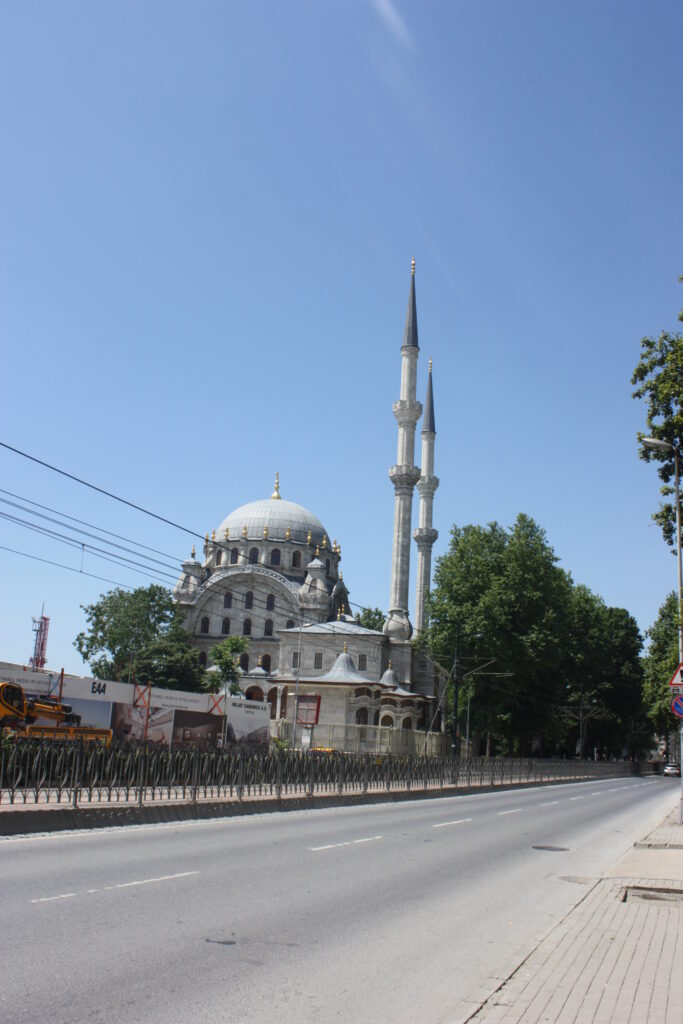
Nusretiye Mosque
The Sadabad Palace was brought to its final form during this period but did not survive to the present day. The Tırnakçı Mansion was passed on to Adile Sultan, the daughter of Second Mahmud. Additionally, there is an Adile Sultan Palace in Kandilli. Adile Sultan willed for the palace to become a school before she passed away. Later, it was purchased by the Sabancı family and is now used as the Kandilli Girls’ High School. A tomb for Second Mahmud was built on Divanyolu, the location where there was once a palace.

Tomb of Second Mahmud
Abdulmecid
Abdülmecid: The Mecidiye Mosque, also known as the Ortaköy Mosque, was built during this period.
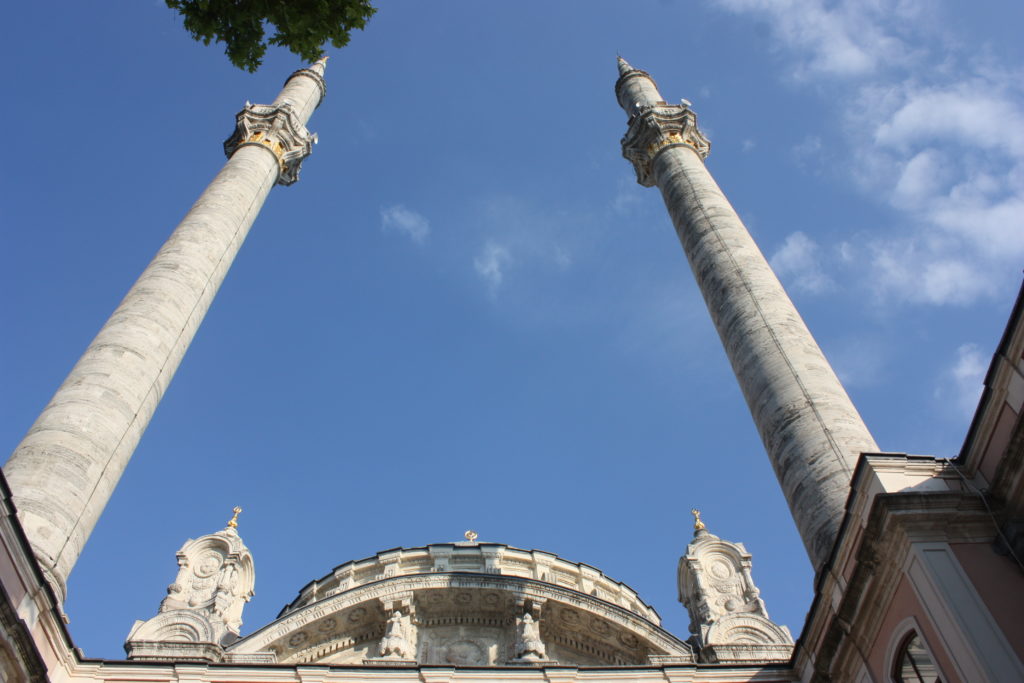
Ortaköy Mosque is also referred to as Büyük Mecidiye Mosque
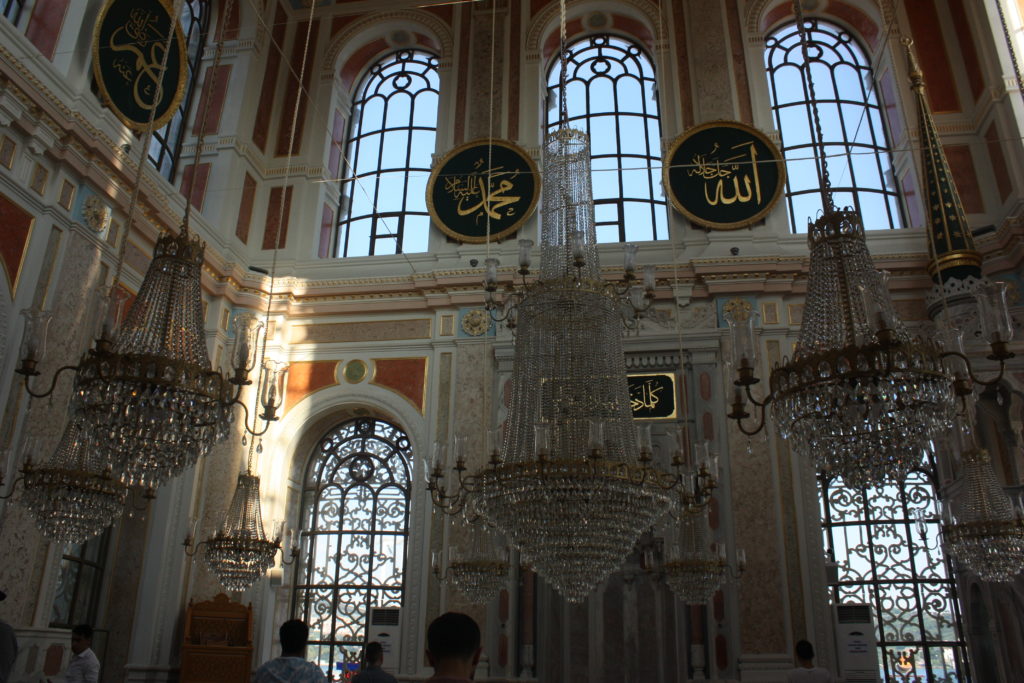
Inside Ortaköy Mosque
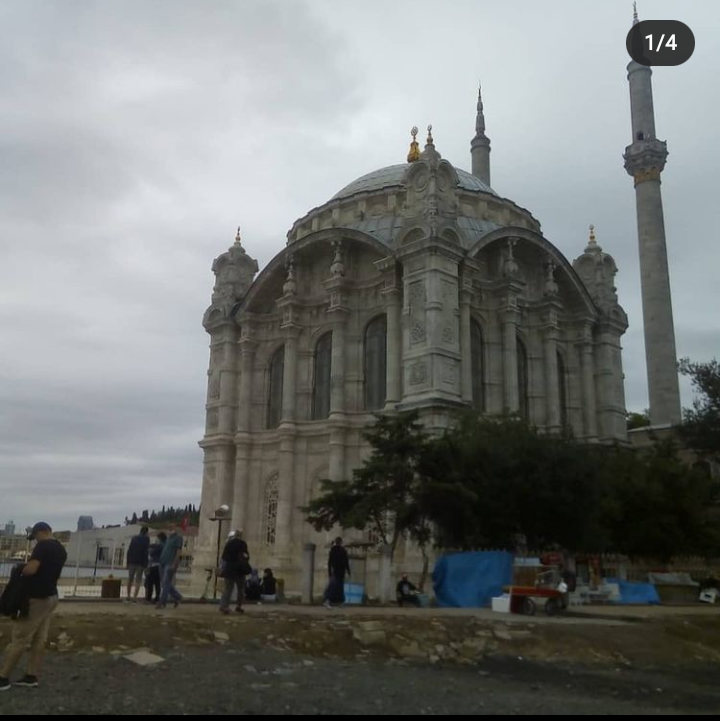
Ortaköy Mosque

Small Mecidiye Mosque
The Dolmabahçe Palace was also built during this period. The Dolmabahce Mosque in front of Dolmabahçe was commissioned by Abdülmecid’s mother, Bezmialem Sultan. However, she passed away at an early age due to tuberculosis and never lived in the palace. While the harem section of the Dolmabahçe Palace can be visited for free with a museum pass, the ceremonial section requires a fee. The area currently used as the National Palaces Museum was the kitchen of the Palace, according to historical records. In this museum, you can see the items used in the palace.
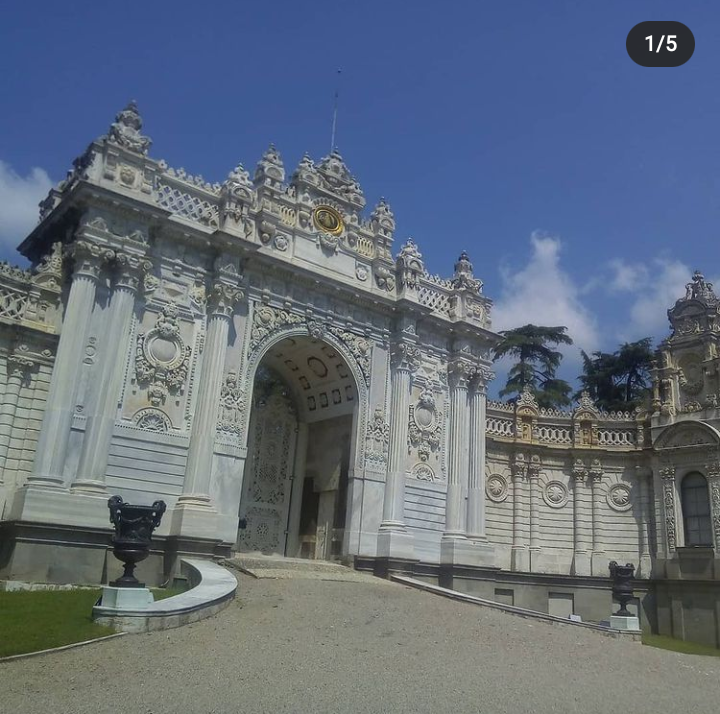
Dolmabahçe Palace
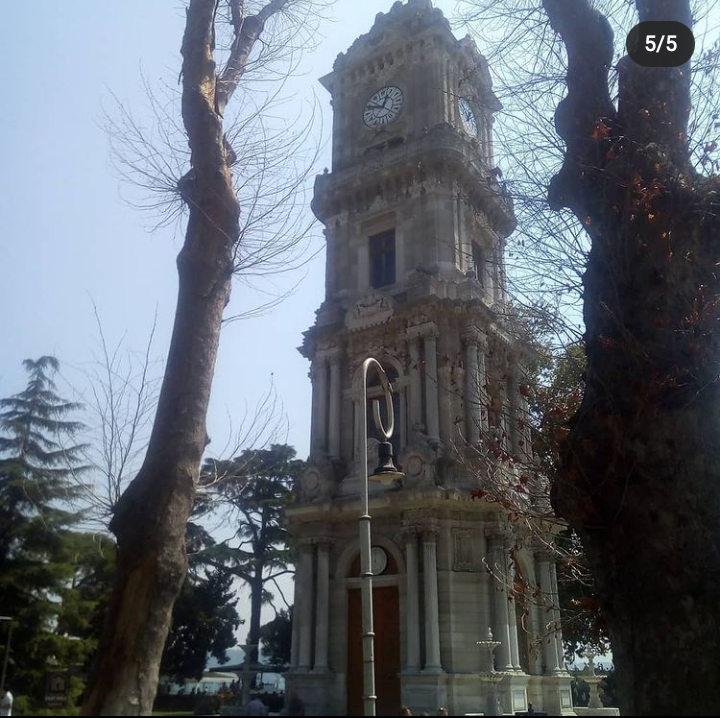
Dolmabahçe Palace
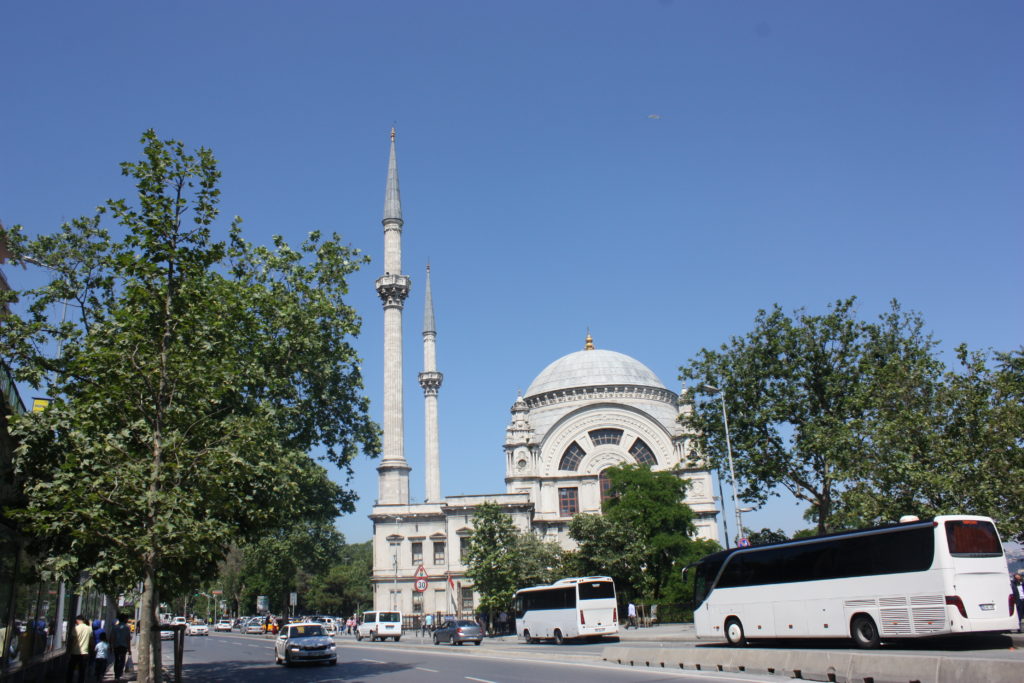
Dolmabahçe Mosque
The Küçüksu Pavilion and Beykoz Pavilion were also built during this period.

Küçüksu Pavilion
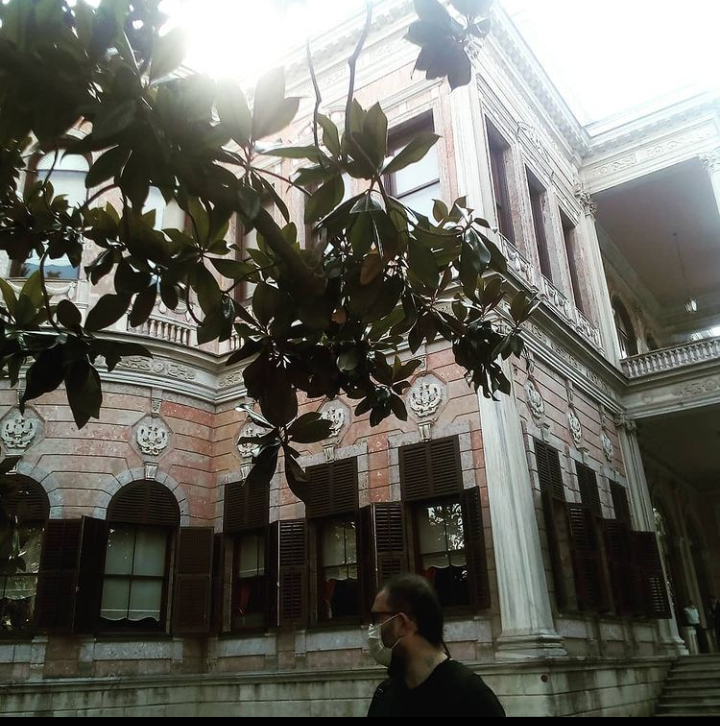
Beykoz Pavilion
The Bezmialem Foundation Gureba Hospital was built during this period. Teşvikiye Mosque was also built during this period. The Çifte Saraylar (Double Palaces) were built for Abdülmecid’s daughters Münire and Cemile Sultan. Cemile Sultan and her husband, Mahmud Celaleddin Mithat Pasha, participated in the coup against Abdülaziz and were later exiled by Second Abdülhamid. The Çifte Saraylar were also used as a parliament building. They are currently used as the Fine Arts Department of Mimar Sinan University.
Mediha Sultan lived in the Mediha Sultan Mansion with her husband, Damat Ferit Pasha. The building, now owned by the Sabancı family, was used as a hospital for bone diseases. Abdülmecid died of tuberculosis in the Ihlamur Pavilion, and his tomb is in the tomb of Second Mahmud.

Ihlamur Pavilion photo was a bit forced.
Abdulaziz
Abdülaziz: The construction of magnificent palaces and structures continued during this period with the debts incurred during Abdülmecid’s reign until the treasury went bankrupt. The Çırağan Palace, Feriye Palace, and Beylerbeyi Palace were built to replace old structures during this period. Beylerbeyi Palace was used as a summer palace.
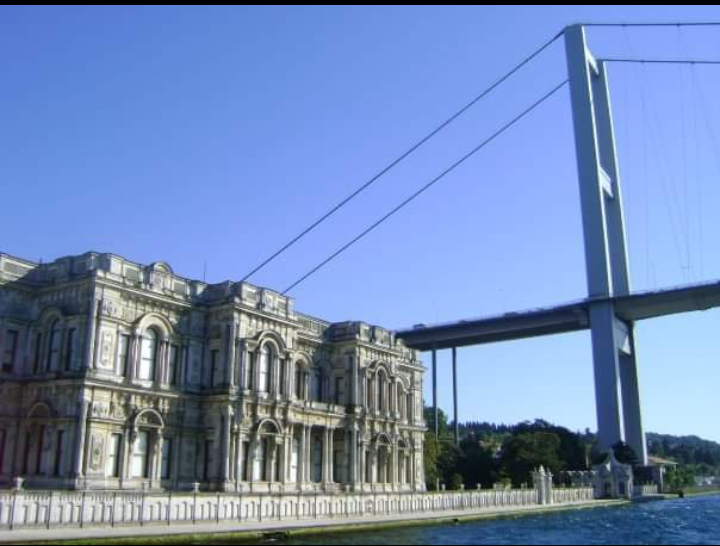
Beylerbeyi Palace
Topkapı Palace was completely abandoned, and the Çırağan Palace was used as a place of exile. Abdülaziz’s mother, Pertevniyal Valide Sultan, had a mosque built. When descending from the Bozdoğan Aqueduct towards Aksaray, the mosque can be seen as historical trips.
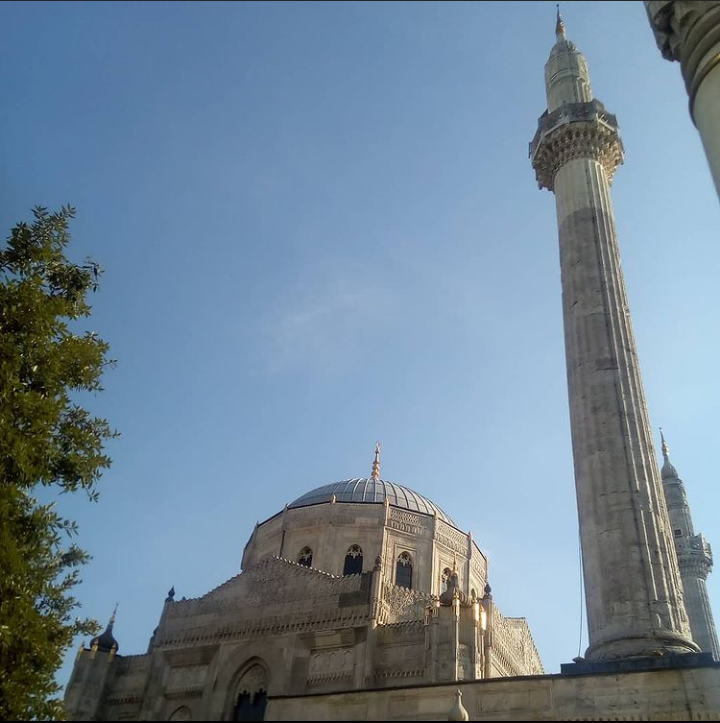
Pertevniyal Valide Sultan Mosque
Laleli Mosque is within walking distance for historical trips. The Feriye Palace complex was used for educational purposes in the Republican era, such as Kabataş Erkek Lisesi (High School), Galatasaray University and High School, and military schools.

Feriye Palaces and Çırağan
The Tırnakçı Mansion was demolished, and a stone building was built in its place, which was allocated to Abdülaziz’s daughter, Esma Sultan. The semi-ruined building next to Ortaköy Mosque is currently being used as The Marmara Esma Sultan, probably as a hotel or restaurant backdrop. Abdülaziz’s tomb is in the tomb of Second Mahmud.
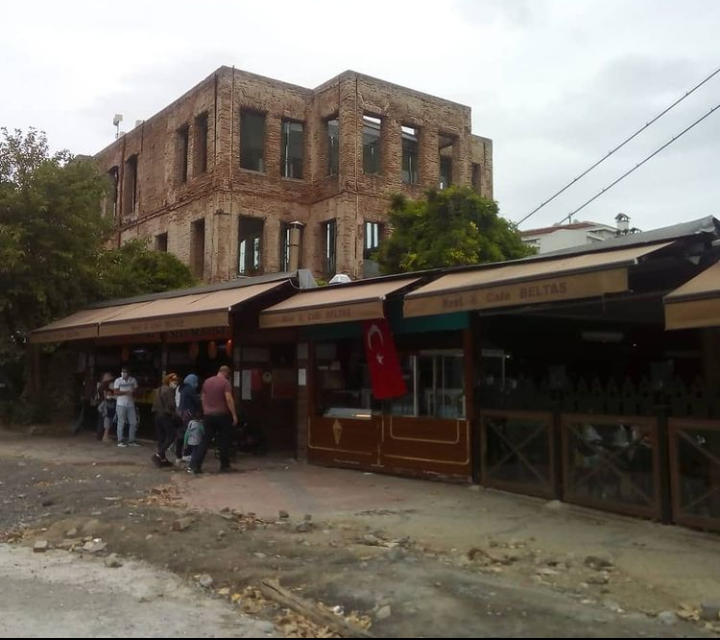
Esma Sultan Mansion
Fifth Murat: Sultan Murat, who holds the record for the shortest reign, was known to be mad, yet he received more admiration in Europe than even Abdülaziz due to his good education and relationships with Namık Kemal and other Young Turks. Abdülaziz, who was dethroned, was initially exiled to Topkapı Palace, but when it was found to be in ruins, he was moved to Çırağan Palace. Here, Abdülaziz cut his own wrists.
Abdulhamit ll
Second Abdülhamid: During the reign of the unlucky sultan, historic buildings were constructed, including the Duyunu Umumiye building, which regulated the Ottoman debts. His most important achievement was the construction of railway lines. Haydarpaşa and Sirkeci train stations were built during this period. Many institutions, including Şişli Etfal Hospital, whose foundations were laid during this period, continue to exist in some form today. Some of the projects planned by Abdülhamid were realized during the Republican era by Mustafa Kemal Atatürk. The palace was moved to Yıldız during this period. The Yıldız Mosque was built just outside the palace.

Yıldız Mosque

Yıldız Mosque
Additionally, the Hamidiye Mosque was built on Büyükada. By the way, I’ve never been able to visit the Yıldız Palace because it’s been under restoration for as long as I can remember. During this period, the 5th Murat was also in exile in Çırağan. Abdülhamid, who married off two of 5th Murat’s daughters at a late age, provided them with a place next to the Esma Sultan Mansion.
Hatice Sultan, one of these daughters, engaged in a forbidden love affair with Kemalettin Pasha, the husband of Abdülhamid’s daughter Naime Sultan. It is said that 5th Murat was very upset about this incident and that it hastened his death. The mansion is known as Hatice Sultan Mansion. However, it can be observed from the outside as it has been under restoration for years. The mansion allocated to Naime Sultan, who Abdülhamid considered lucky because she was born on the day he ascended the throne, still stands, albeit semi-ruined. After being dethroned, Abdülhamid continued his exile first abroad and then in Dolmabahçe Palace. His tomb is in the tomb of Second Mahmud.
Mehmet Resat
Mehmet Reşat: During this period, when the official administration was no longer in the hands of the Ottoman sultans and transitioned to the parliament, palace life was in Dolmabahçe. Nobody except for Abdülhamid lived in exile or in cages; they lived in their own mansions or waterfront residences. During this period, the Çırağan Palace, where parliament meetings were held, burned down. Sultan Reşat said he was not saddened by the burning of Çırağan Palace because bad things happened during his reign. The Çırağan Palace, rebuilt from scratch by the private sector in the Republican era, is now used as a hotel. His tomb is in Ayoub Sultan.
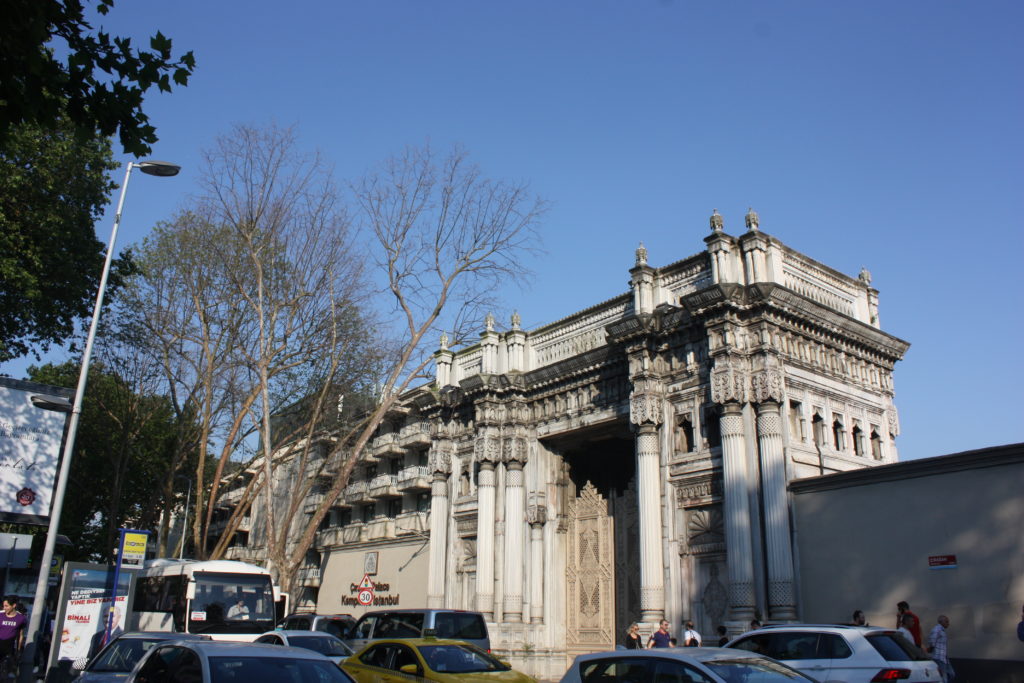
Çırağan Palace
Vahdettin: As the country was under occupation during his reign, no new structures were built during this period. He died in exile abroad.
You can find a route here in Istanbul that includes some of the structures mentioned here, as well as some pre-Ottoman structures and some more historical trips.
